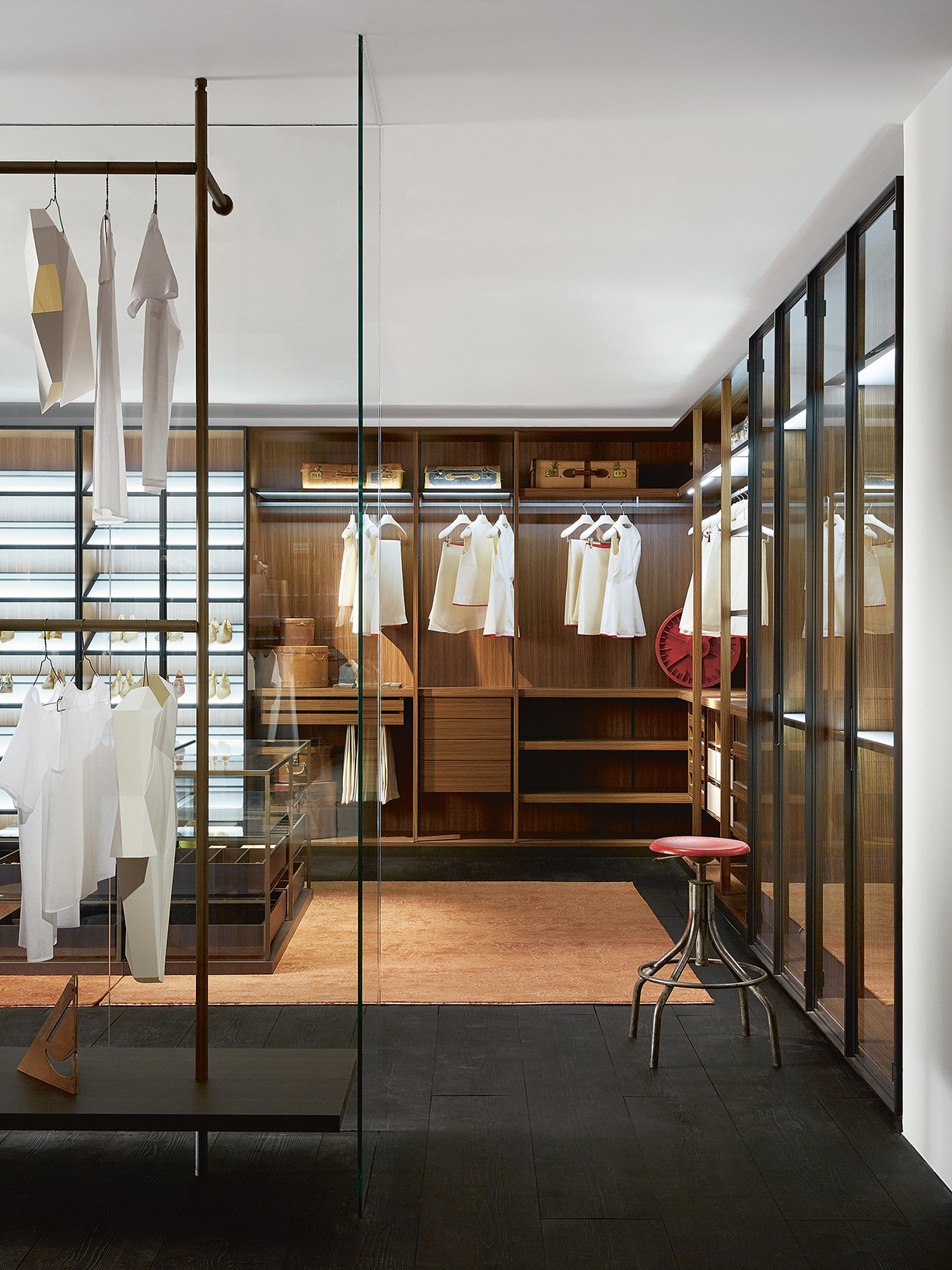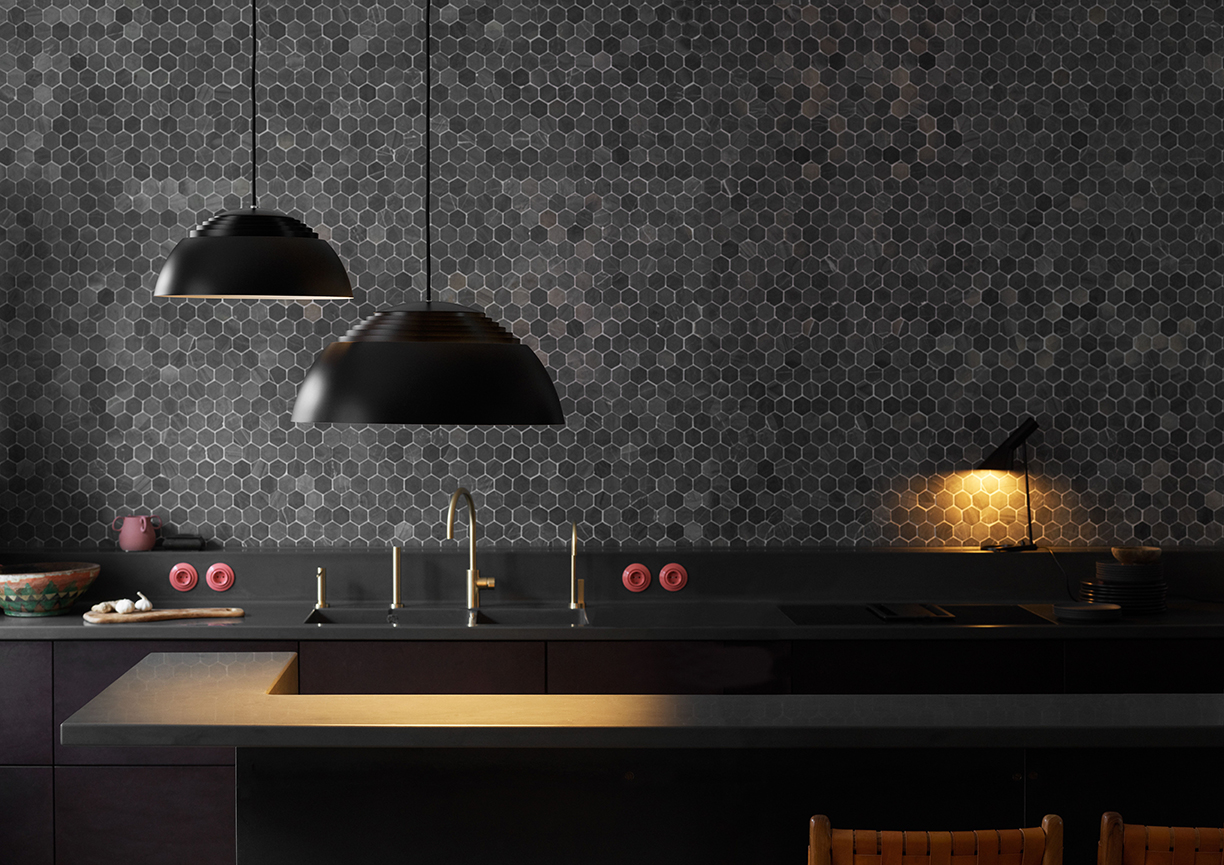
Ask any stylist the key to a successful shoot and you’ll find yourself in a conversation about lighting.
More than just aesthetics, it possesses its own emotional language, writing atmosphere and warmth into contemporary interiors. If you or your home are feeling a little under the weather, consider experimenting some with some new lighting. You might be surprised at the life it brings.
To help you get started, Chaplins Furniture has created a shortlist of the best new launches this season…

On the Move
Freed from the shackles of cables, today’s best designer lighting its portable, fun and ready to move. Opt for the comfort of a time-honoured lantern or keep things contemporary with a colourful new BELLHOP.
Ideal for study nooks, reading or outdoor soirees, these versatile luminaires reimagine the intimacy of candles for the modern age.
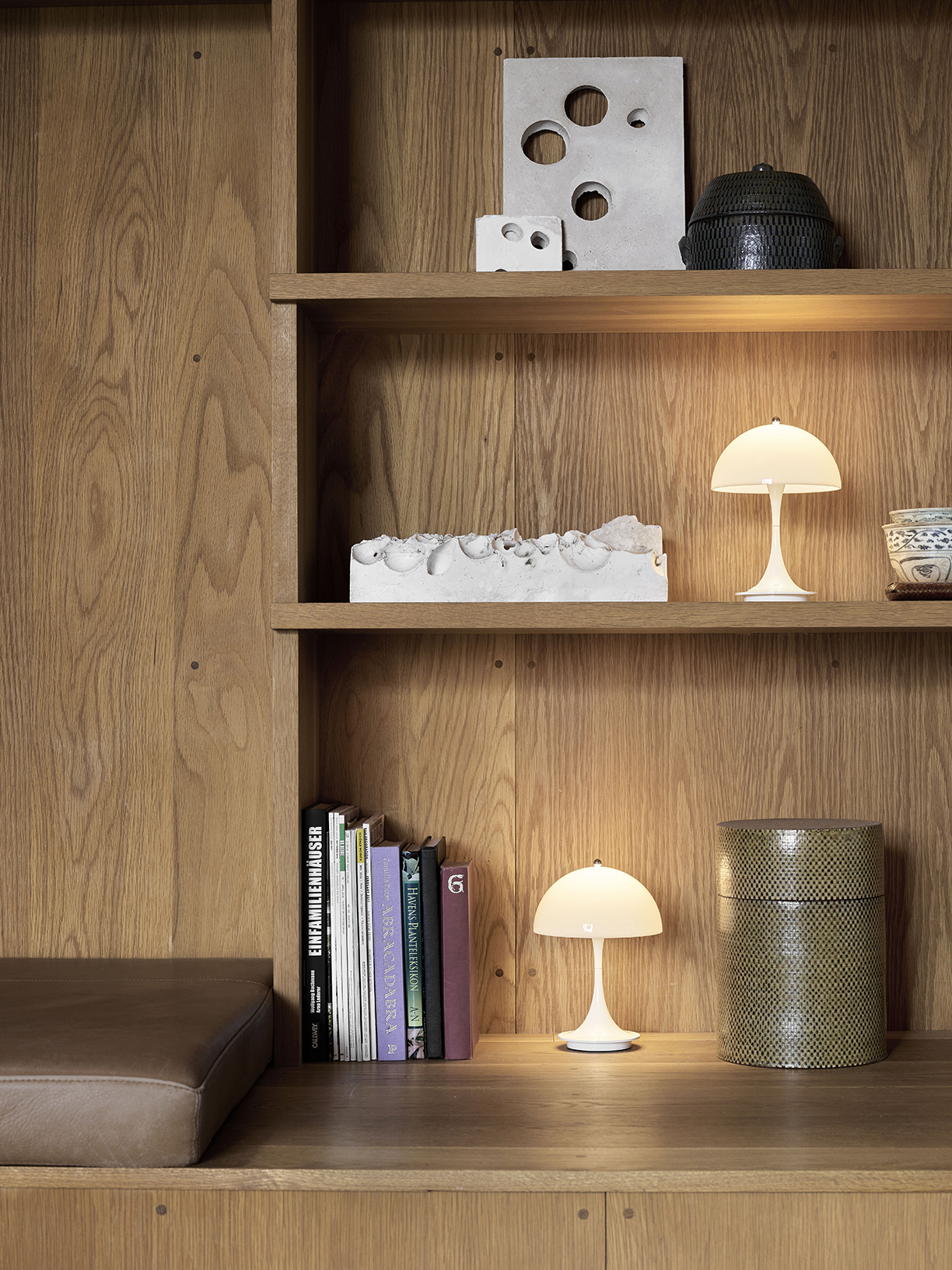
Sleek Scandi
All clean lines and essential silhouettes, sleek Scandi finds beauty in the bare minimum, offering a serene reprieve from the clutter of contemporary life. Leading the subtle style stakes are the new POST WALL LIGHTS by Muuto.
Thanks to a system of magnetic wall brackets, they can be arranged in striking linear configurations, with 360 degree swivelling bulbs and touch-controlled dimming.

Back to Black
In 2020, designers are experimenting with classic drama, revealing a host of iconic designs in sleek matt-black colourways. Seductive and bold, the new palette feels fitting for this time of year, updating winter homes with a little monochrome magic. A new favorite? The New PH Artichoke in BLACK, a daring design statement if ever there was one.
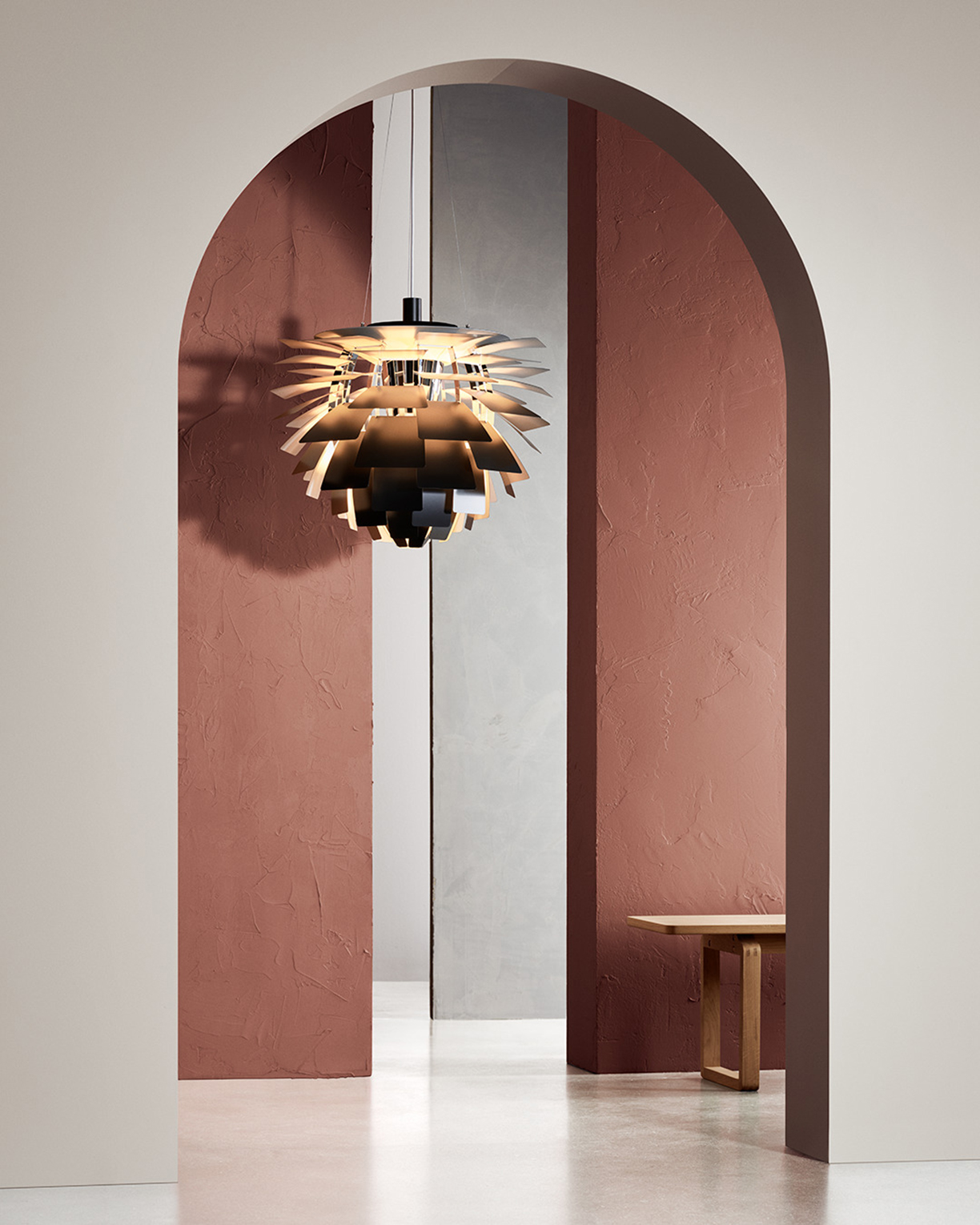
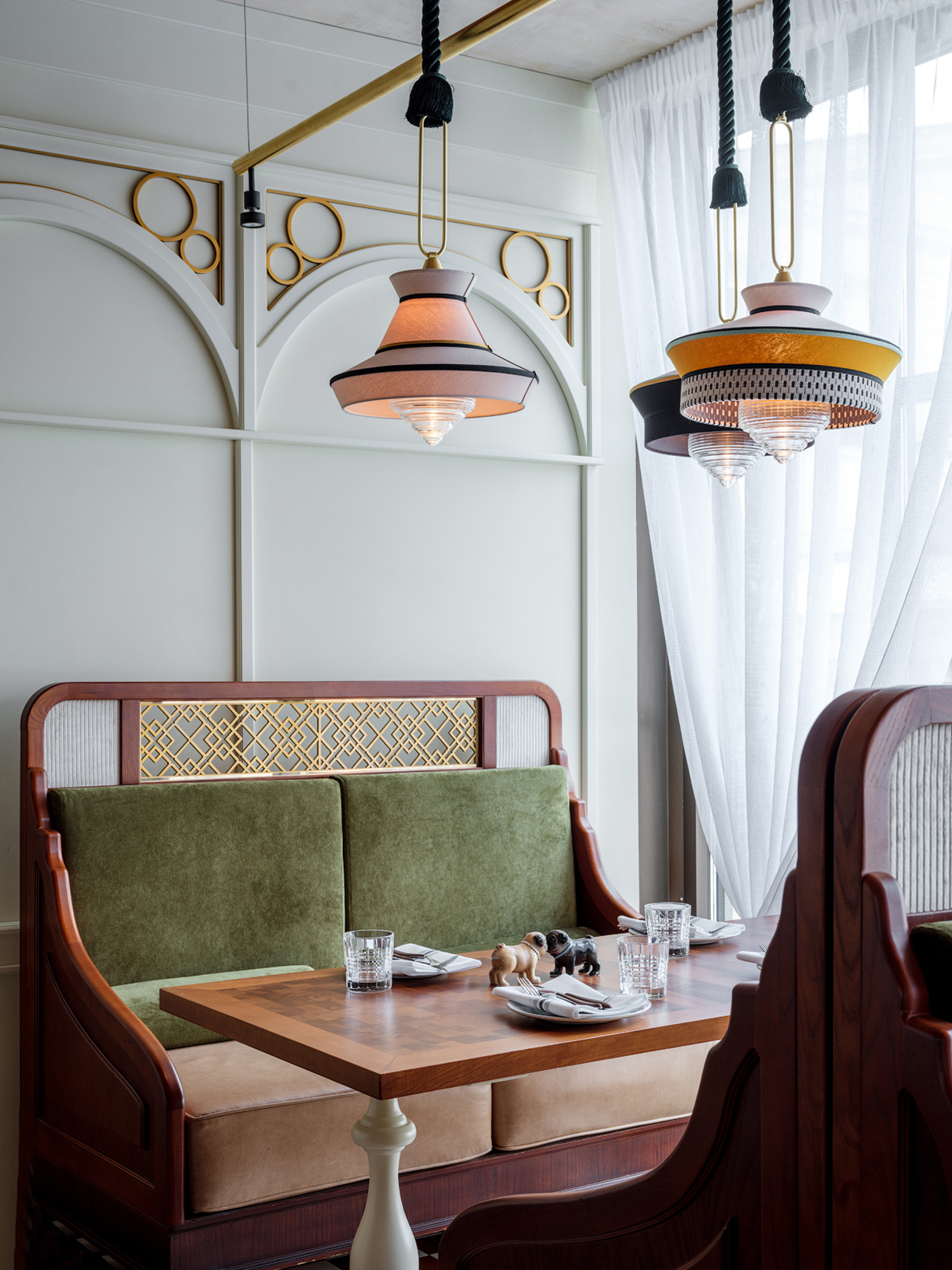
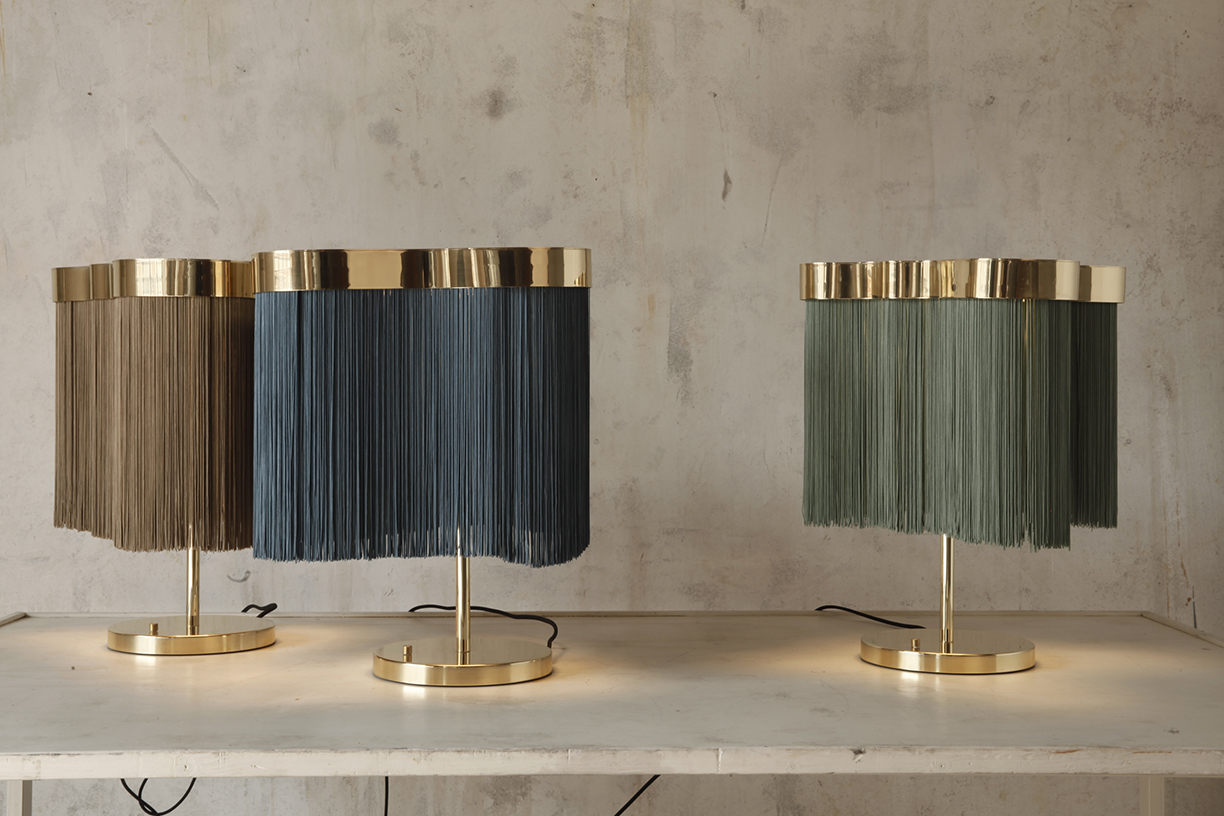
Deja-Vu
We couldn’t sign off without mentioning a handful of new retro lights that are making waves in maximalist circles. Boasting everything from 70s fringe through to art deco prints, these funky designs pack a serious punch, with island culture inspiring the creation of the new ARCIPELAGO LAMPS and CONTARDI’S extended CALYPSO collection.
All photos courtesy Chaplins Furniture.
On tablescapes, in kitchens and baths, garden and great rooms, green seems to be having a moment.
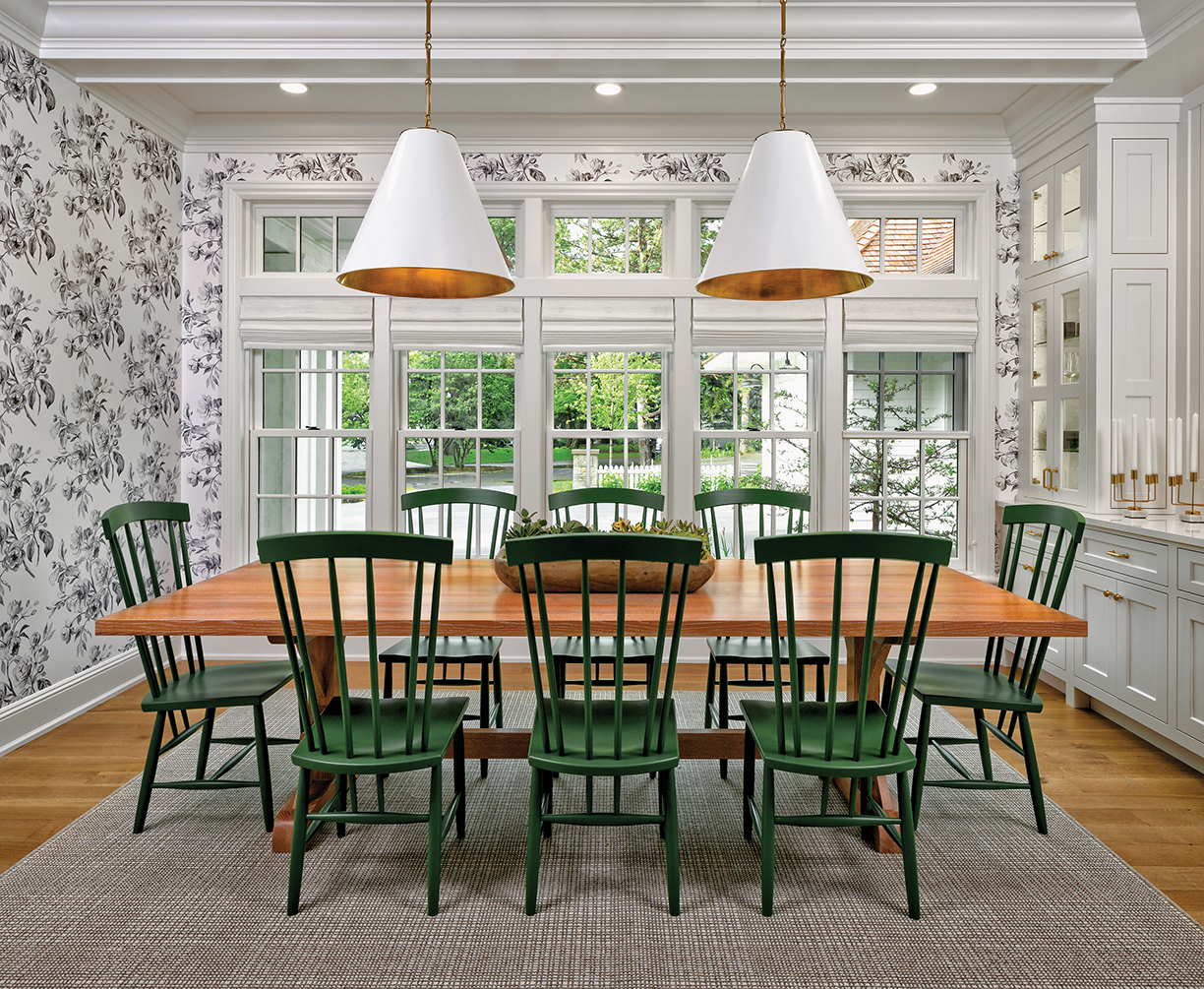
Photo courtesy of marvin Windows and Doors
Extensive windows and doors link to greenery outside and bring nature inside.
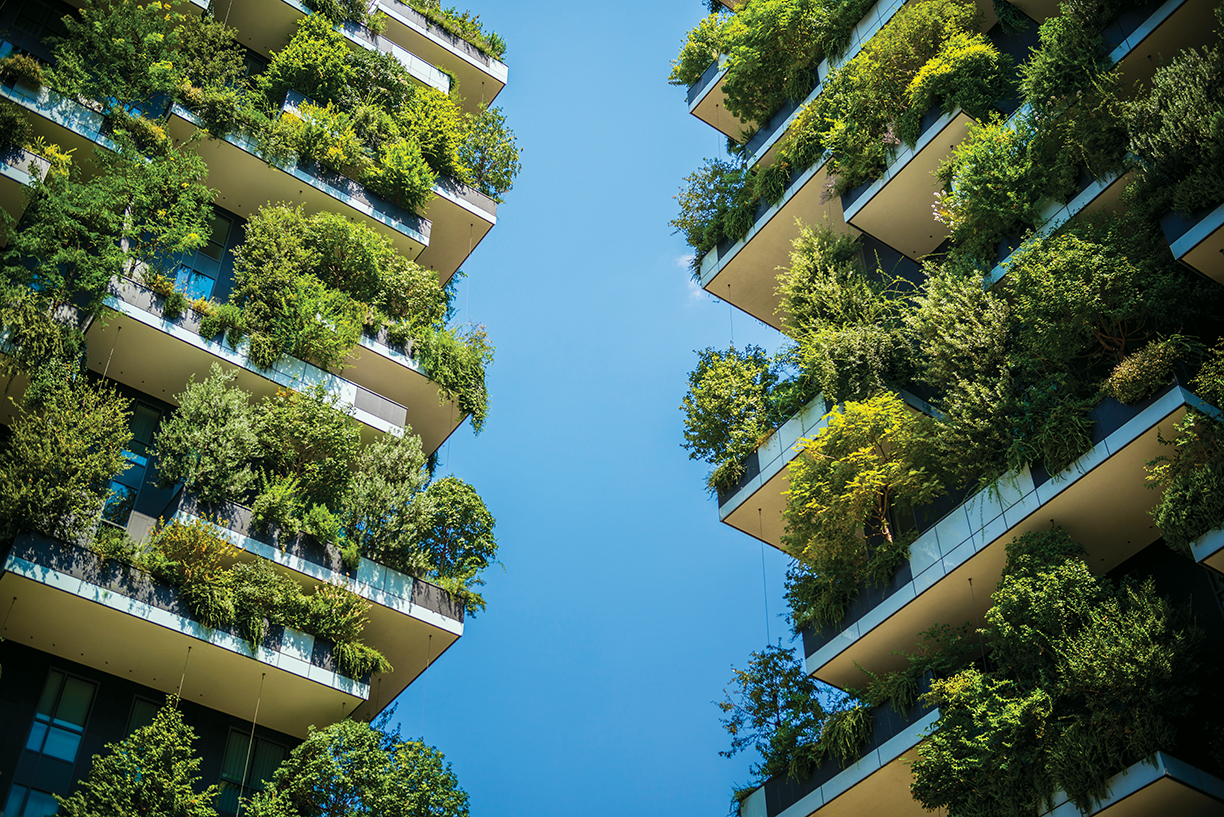
©istockphoto.com / martinwimmer
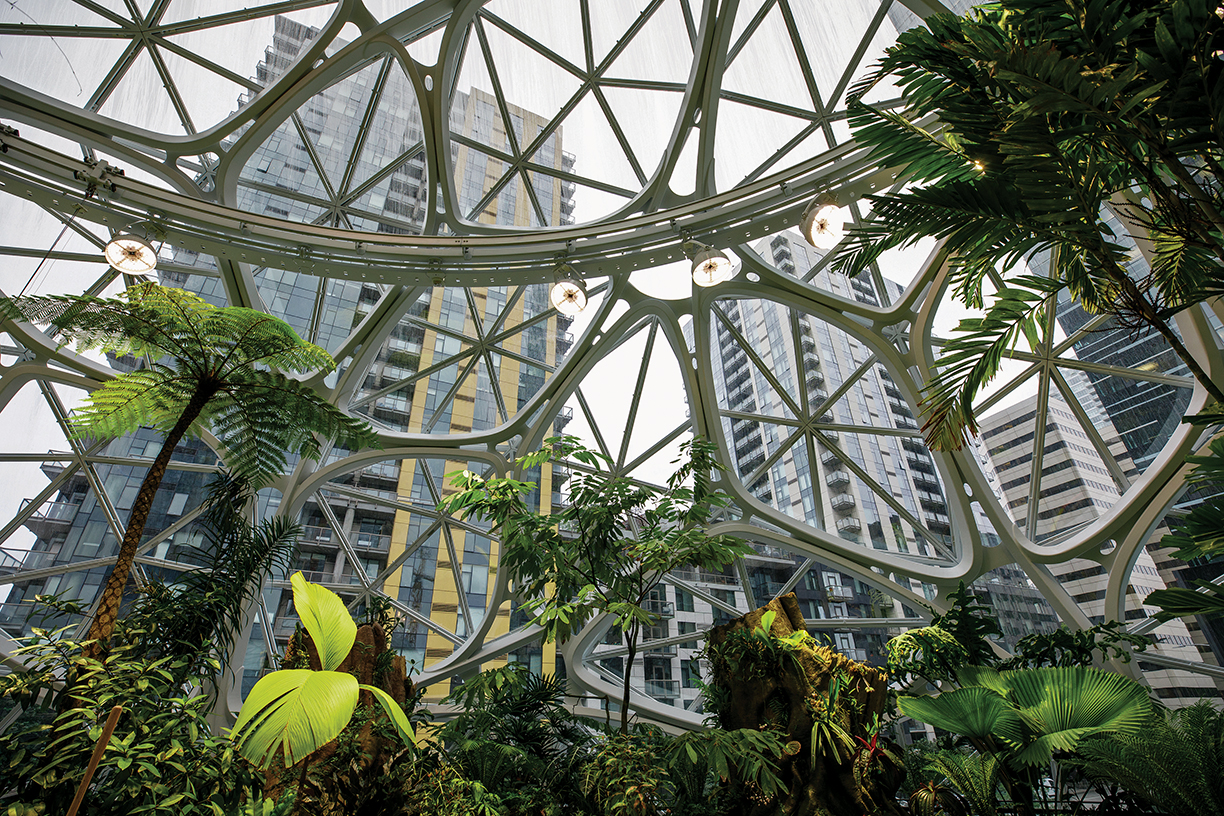
Photo JORDAN STEAD / Amazon
Not too long ago, it was difficult to spy even a vestige of green in a room. Today, it’s almost impossible to find new interior scheme without a spark of green. “We’re seeing emerald green used on everything from walls to cabinetry to tile and even lighting,” observes Sue Wadden, director of color marketing at Sherwin-Williams.
Green hues, especially deep vibrant shades, seem to be everywhere along with living greenery and plants. But rather than a fleeting color preference, the passion for green might also be the first sprouts, indications of a more transformative movement — biophilic design — edging into residential design and architecture.
Biophilia, according to consultants Terrapin Bright Green, refers to humankind’s innate biological connection with nature. Although social psychologist Eric Fromm first coined the phrase “biophilia,” the concept wasn’t popularized until the 1980s when biologist Edward O. Wilson took up the mantle. Biophilic design introduces natural elements, organic forms, light and water into the built environment. Research shows integrating natural elements increases productivity, enhances creativity and improves mental health. “We’re getting evidence-based design, especially in the healthcare industry, that just by having a view of the outside a patient recovers quicker and requires less medication and attention after surgery,” observes Miami designer B. Pila.
“The use of green in home interiors is picking up steam,” explains Stephanie Pierce, director of design for MasterBrand Cabinets. “There are a variety of shades cropping up today, particularly in the kitchen and bath from deep emeralds to soft sages and dark ivies. Deep, moody hues are making a bold impact on these spaces. The effect is as cozy as a warm blanket.”
“Touches of rich, verdant green can make it feel as though you’ve escaped to the outdoors and are soaking up the invigorating effects of nature — without even leaving your home,” shares Wadden.
“With the growing interest in wellbeing in all aspects of our lives, including the home, people are using nature-inspired lush greens to bring comfort into spaces,” explains Christine Marvin, director of corporate strategy and design at Marvin Windows and Doors. “Emerald green is a bold color that perfectly balances glamour with calmness, evoking a sense of relaxation and inspiration.”
Three spherical conservatories forested with more than 40,000 plants and trees allow Amazon employees to work while surrounded by nature.
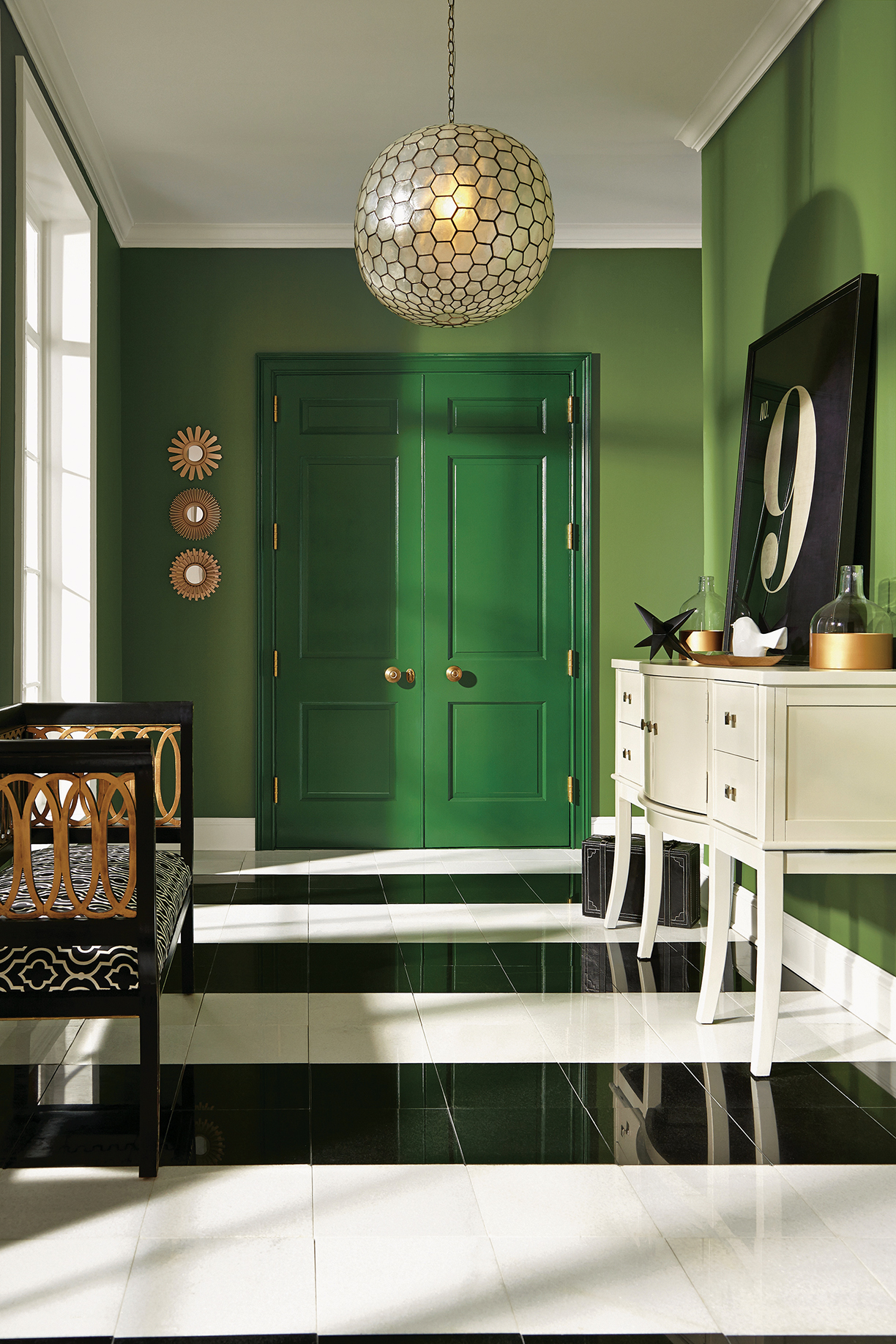
Photo courtesy of sherwin-williams
Green, whether an accent or main course, is a mainstay on design menus.
Until recently, biophilic principles were utilized primarily in commercial structures, and the inclusion of nature — living plants, park-like oases, organic forms, natural materials including wood and stone, water and light — is revamping corporate settings including Amazon, Apple and Google. Last year, Amazon’s long-awaited biophilic project, The Spheres, opened on the site of its original headquarters. The three glass and steel domes are forested with more than 40,000 plants. Along with plants and a four-story-tall green wall, there are waterfalls, a river, walkways and meeting spaces. Hotels and other commercial spaces are implementing biophilic design practices but with more modest expressions.
For residential buildings, the addition of natural elements and connections with the outside has been an ongoing evolution, partially in response to consumer attitudes rather than a dedication to biophilia. Designers are just catching on. “Consumers are more educated in wanting healthier lifestyle choices,” says Angela Harris, creative director and principal of TRIO, an award-winning interior design firm in Denver.
Current residential design merges indoors and out, organic and humanmade, using visual and real connections. The integration of outdoor spaces is a response to consumer lifestyle demands, but the end result potentially delivers the cognitive, psychological and physiological benefits biophilia advocates tout.
“We’ve noticed an increase in demand for bigger windows over the past five years, as more people want to feel connected to the world around us while we’re indoors,” comments Marvin. “In a world that’s become fast paced and where our living and workspaces are merging, letting light in allows us to feel alive and connected to space outside our homes. Incorporating large windows into the home plays a significant role in achieving this ‘outdoors in’ feel and connecting to nature. We’re also seeing a pull towards large window walls, or many windows that are mulled together to create a wall of light that heightens the experience of light in a home.”
It may seem biophilia is just another quick moving fad, but more than one organization is promoting the concept and actively formulating certifications for buildings under the auspices of groups such as the International Living Future Institute, a Seattle-based nonprofit that encourages sustainable practices and wellness. In 2016, a cadre of architects, builders and researchers formed the Biophilic Design Initiative to further the movement. Biophilia is also part of the U.S. Green Building Council’s WELL Building Standard.
Whether or not biophilia will exert a long-term influence on design remains to be seen, but there is a good chance wellness and nature will be an important aspect of design’s new normal.
A modern traditional masterpiece of privacy and perfection. An exquisite Mediterranean work of art and appeal. An elegant estate designed with soaring ceilings and refined finishes. Their common denominator? All located in the Lone Star state, and sold through Supreme Auctions, known for accelerating marketing for luxury real estate. See these exclusive sales below.
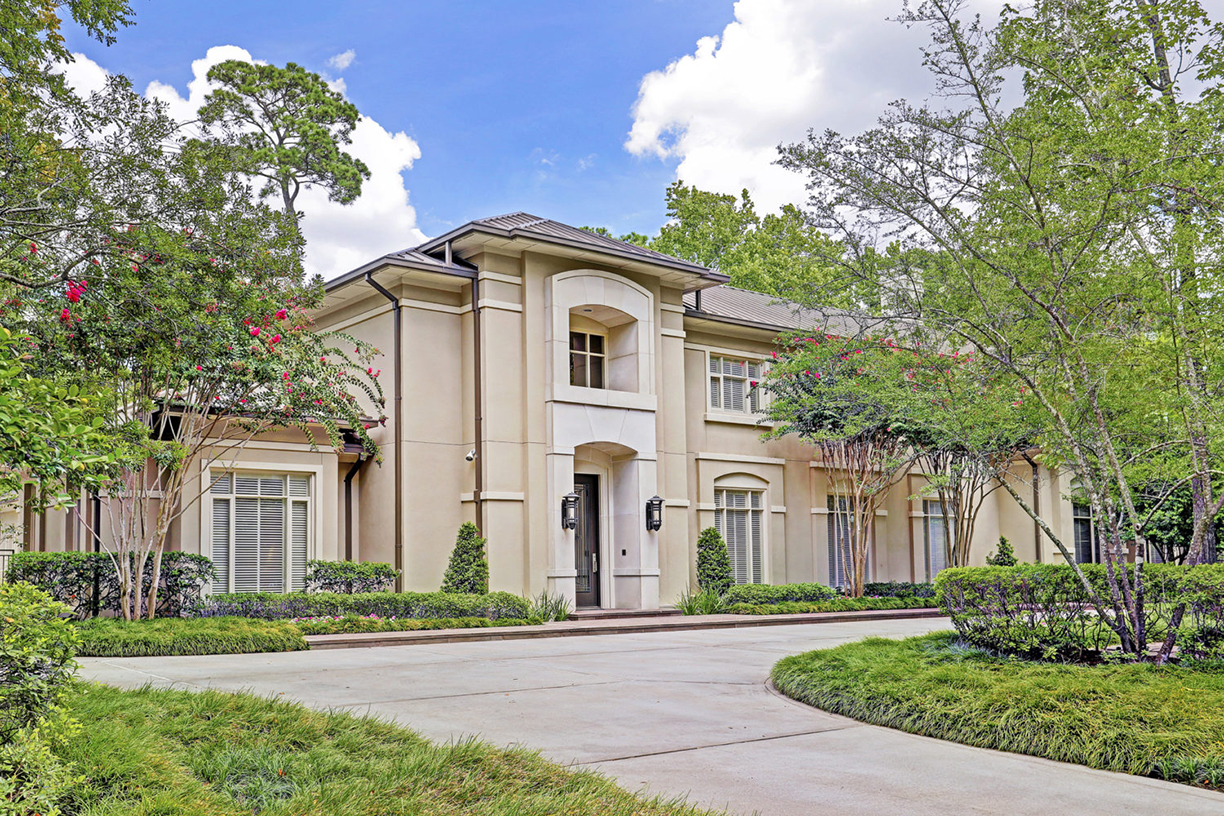
Piney Woods Edge – Houston Texas
Piney Woods Edge is a modern traditional masterpiece of privacy and perfection showcasing pristine lines of modern architecture, and the impeccable mastery of Houston’s premier homebuilder, Randy Ratcliff. Each corner of this home is filled with exquisite detail and opulent features. Located in Piney Point Village within the prominent Houston suburbs of the highly desirable Memorial Villages communities, just minutes from the heart of Houston for both business and pleasure.
Even though the property was located in a highly sought-after community called Piney Point Village in Houston, it lingered on the market for over two years with the listing agent doing all that was available to market the property to potential buyers with little to no activity. Supreme Auctions implemented our 45-day Accelerated Marketing Program which drove prospective buyers to take action.
Catina Hollow – Dallas Texas
Catina Hollow is an exquisite Mediterranean work of art that will dazzle you with its serene setting and abundant appeal. Designed with distinguished architectural elements and refined finishes throughout, this outstanding property is positioned in one of the premier estate neighborhoods in Dallas within the highly sought after Preston Hollow Community. Located a brief 15 minutes from Dallas Love Field Airport and downtown Dallas with all that the city has to offer.
The property was on the market for about a year and not stimulating any new buyer activity. With summer fast approaching, which is not the best time of year to sell in Dallas, plus the fact that the seller had already purchased another home, they chose an expedited sale with Supreme Auctions.
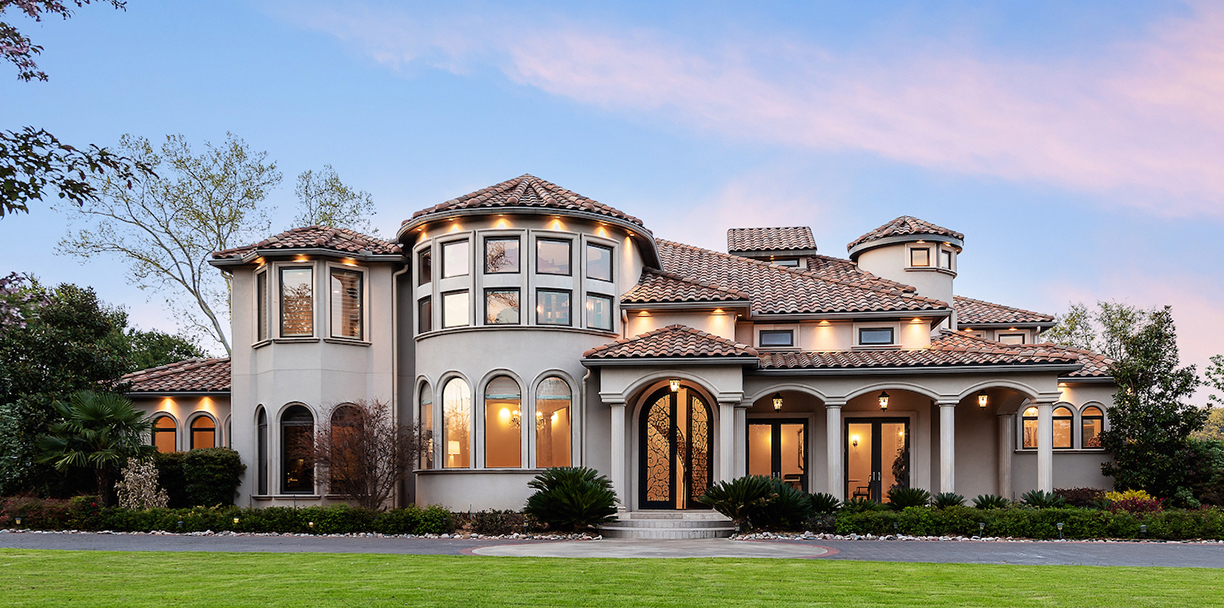
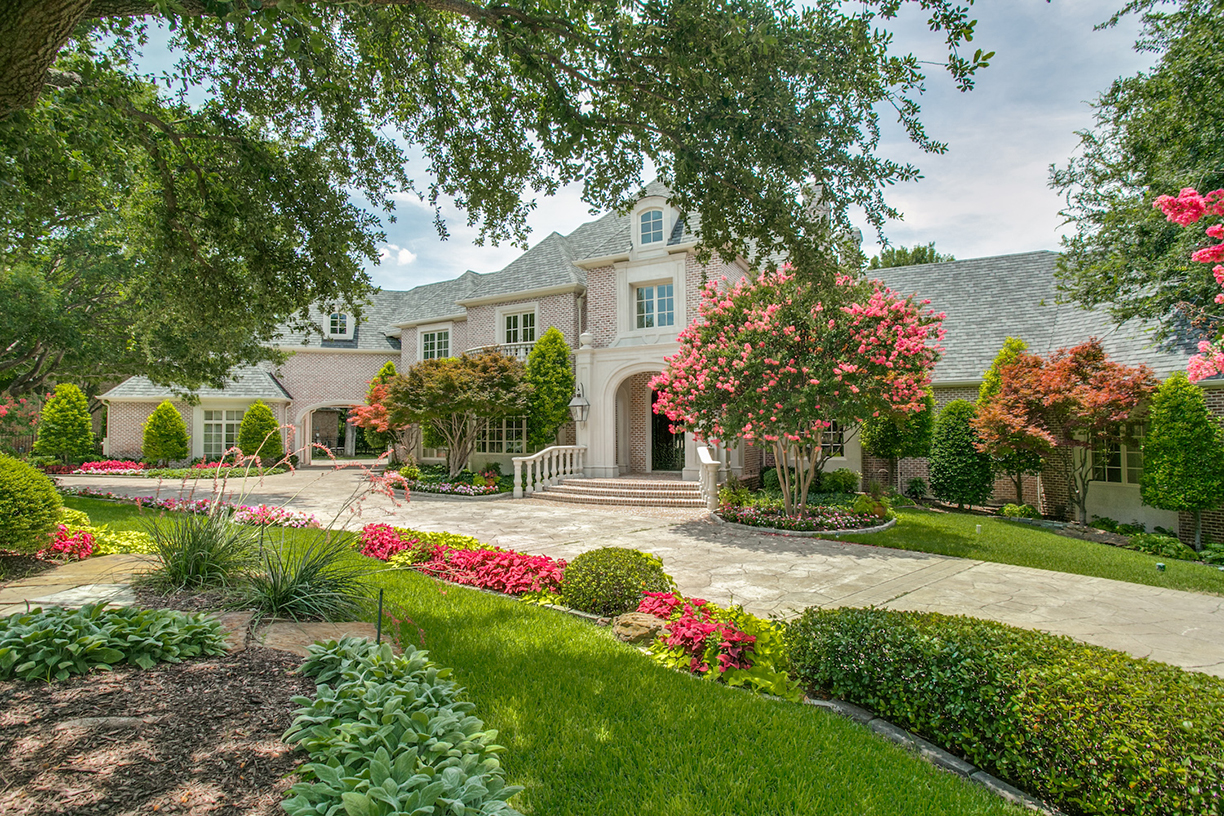
Starwood Creek Manor – Frisco Texas
Privately nestled on over an acre, Starwood Creek Manor is an impeccable Traditional estate designed with soaring ceilings and refined finishes throughout. Located within the gated Starwood Community, this exquisite home is positioned overlooking the creek and walking paths with access to the Community amenities. Situated within 25-minutes away from DFW International Airport.
The property was on the market for a little under a year, during which it received only seven viewings. The listing agent conducted three months of research as to which auction company to select, she contacted Supreme Auctions.
All photos courtesy Supreme Auctions.
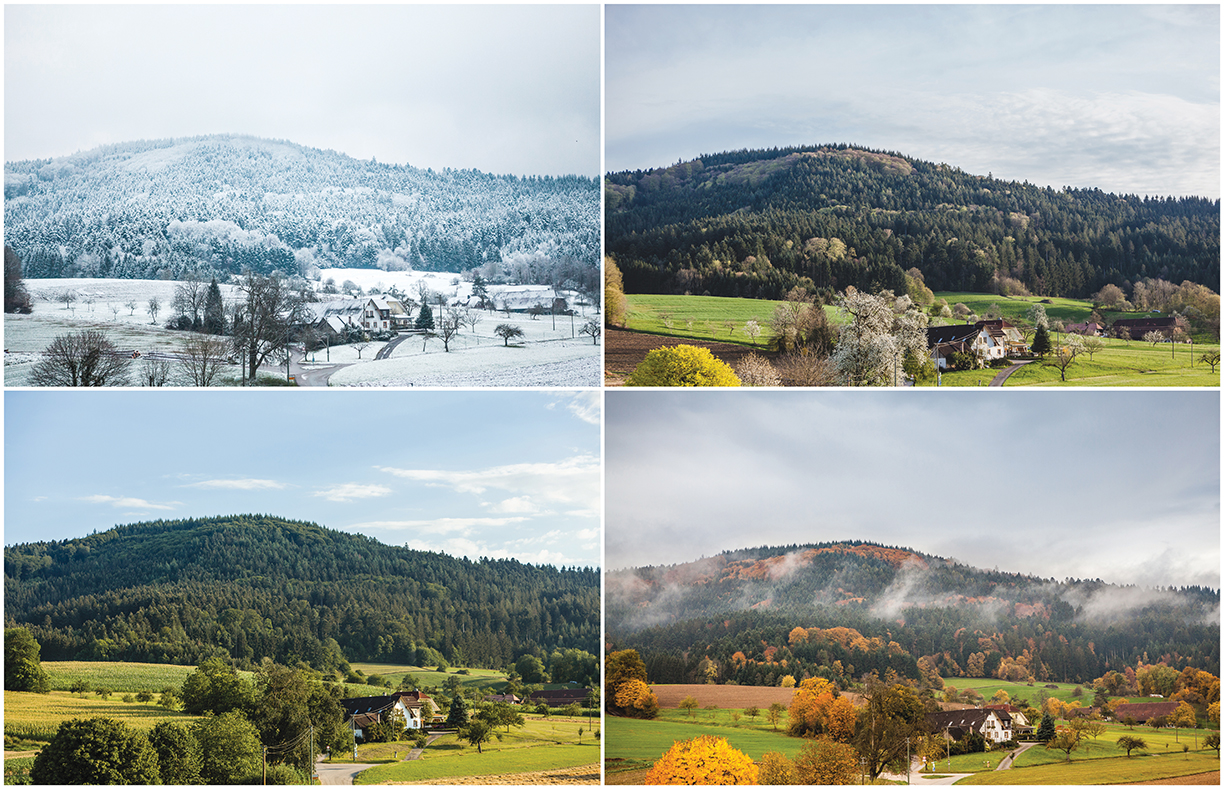
©istockphoto.com / Arita Cimermane
“The seasons in the landscape, much like the seasons of one’s life, are to be embraced, appreciated and weathered.” — Robin Kramer
When it comes to the seasons, an adaptable landscape is always a challenge. In northern climates, the focus is too often on the fleeting warmer months where blossoms are abundant and beautiful. Into late fall, the vibrant leaves have fallen and a bare winter — and landscape — sets in. In warmer areas, the challenge is less about the seasons and more about weather extremes such as droughts or rain.
We talked to luxury landscape designers about how they work through the challenges of the changing seasons and find beauty in the landscape all year long.
A Strong Framework
“I consider structure to be the most critical component in any garden. A successful garden design will look good in any season if the bones of the garden are well designed,” says New York City-based Landscape Designer Robin Kramer. “Paths, walls, edging, hedges, pergolas and water features are the permanent features that make a garden strong and confident. The flowering plant material is the dressing of the landscape and can easily be modified based on the desires of the gardener.”
“Ideally, a landscape is something that transitions throughout the year and it has its glory days throughout every season,” says Vermont-based Landscape Designer Ashley J. Robinson. “They are rarely looking for a one-shot wonder with a full-on explosion of bloom in the spring.”
Robinson seeks out materials such as wood, metal or other elements that are not herbaceous in order to craft a composition that is visually intriguing despite the blooms, or lack of blooms. “Natural stone, boulders, outcropping in the garden. A well-intentioned feature is important for a winter garden.”
Similarly, Teresa Watkins, a Master Gardener and specialized horticulturist for over 20 years in Florida, relies on hardscape and garden art to design spaces that truly fit a client’s personality, while at the same time ensuring the health and sustainability of the landscape. “I have an ongoing two-year project designing a formal estate landscape with a rose garden with walls, a faux stone bridge, butterfly garden, water features, orchard, meandering pathways and poolscaping.”
An architectural framework is key to high-end landscape, and Pennsylvania-based Landscape Designer Donald Pell is an expert at finding a balance of this within a range of vernaculars — from English-style to modern. “Our work always includes thoughtfully designed architectural spaces. These can be simple and they can be very substantial,” he says. “Right now, I am building a very large promenade through a woodland
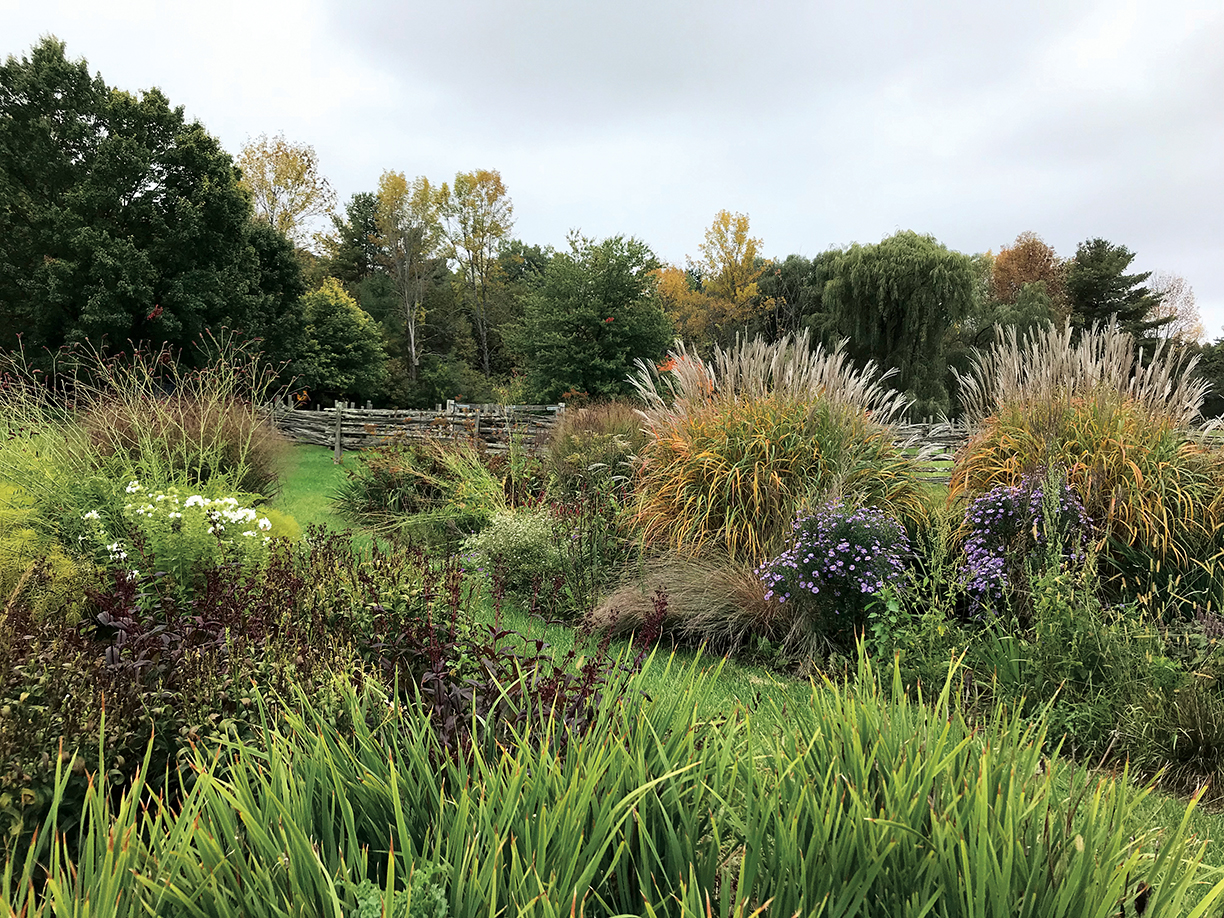
|
A beautiful wild garden crafted by Vermont Landscape Designer Ashley J. Robinson. Photo courtesy of Ashley J. Robinson. |
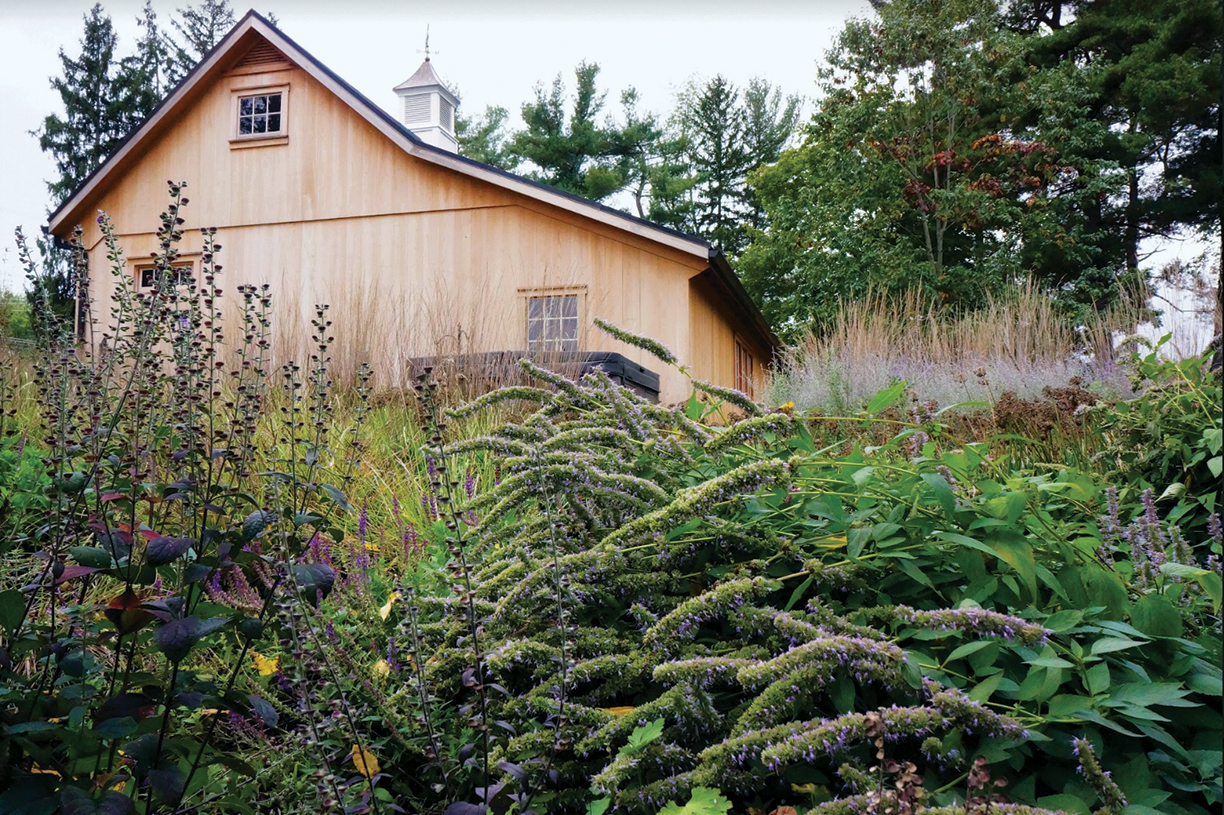
|
Donald Pell Gardens gave this 1700s Colonial Farmhouse garden an update with native and cosmopolitan plants used to evoke the regional landscape. Photo courtesy of Donald Pell. |
that I would describe as very classical, and the plantings are very much impressionistic woodland. I specified hand-cut fieldstone curbing with paths that has a Pennsylvania Colonial feel, and I really like bond pattern paving details angled from the home, which tend to be very modernist.”
When it comes to warmer climates, such as those of the Sun Belt, structure has less to do with looking good throughout bare seasons, but more to do with a landscape that can sustain year-round outdoor living. “For contemporary homes in Southern California, the indoors rolls right outside,” says landscape architect Scott Zucker. “You’ve got enormous sliding doors with pocket entry, kitchen and family rooms that pour right out onto the terrace.” In designing these homes, materials that can withstand the outdoors, but also look just as beautiful indoors is the challenge. A huge trend, Zucker points out, is utilizing porcelain or ceramic pavers that not only keep a stunning transitional look, but also require very little maintenance.
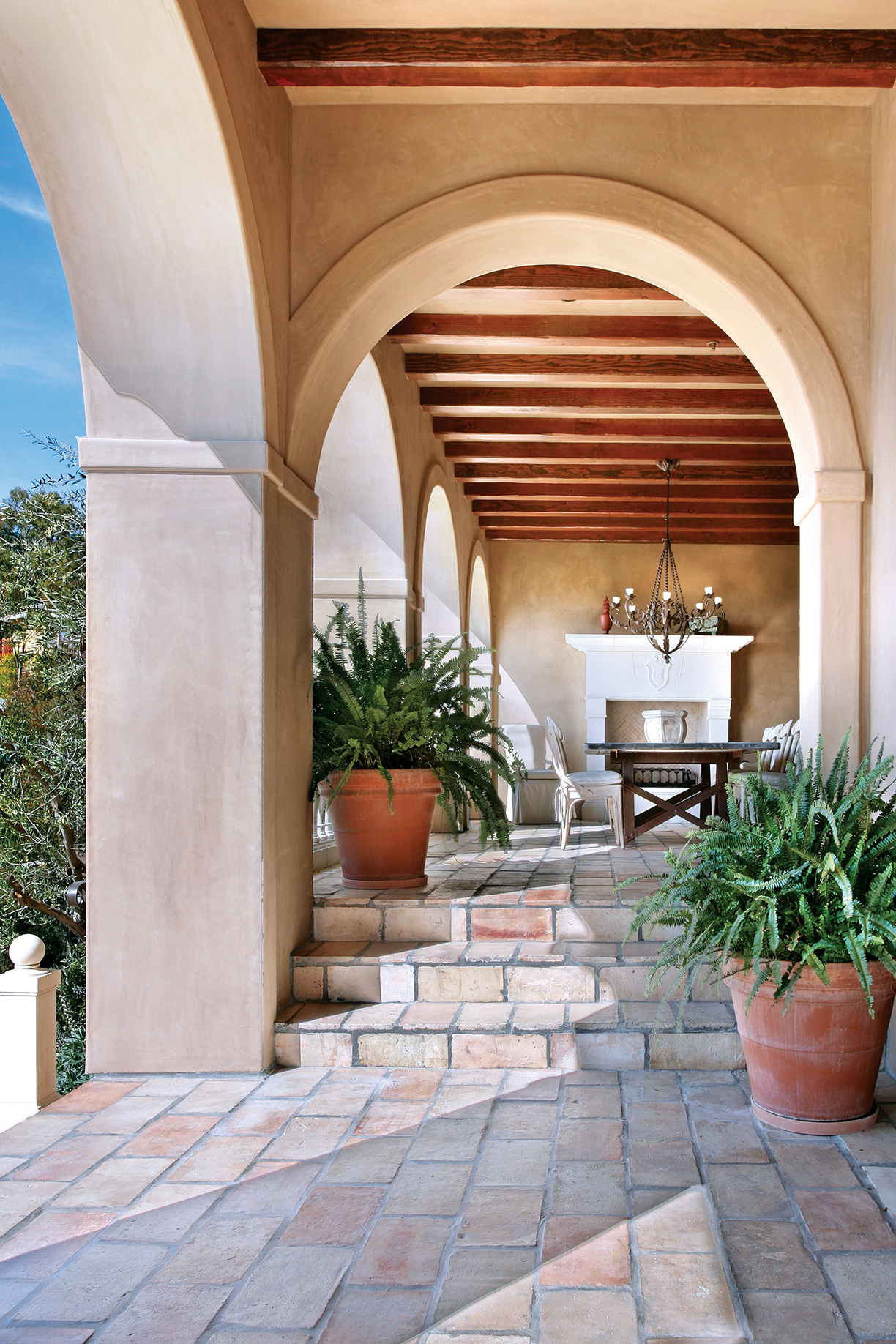
|
Above, an outdoor portico crafted from stone at a Southern California residence designed by Scott Zucker of Zucker Design Associates, Inc. Below, an arbor for a Laguna Beach residence offers an eye-catching landscaping feature. Top photo courtesy of Jeri Koegal. Bottom photo courtesy of Scott Zucker. |
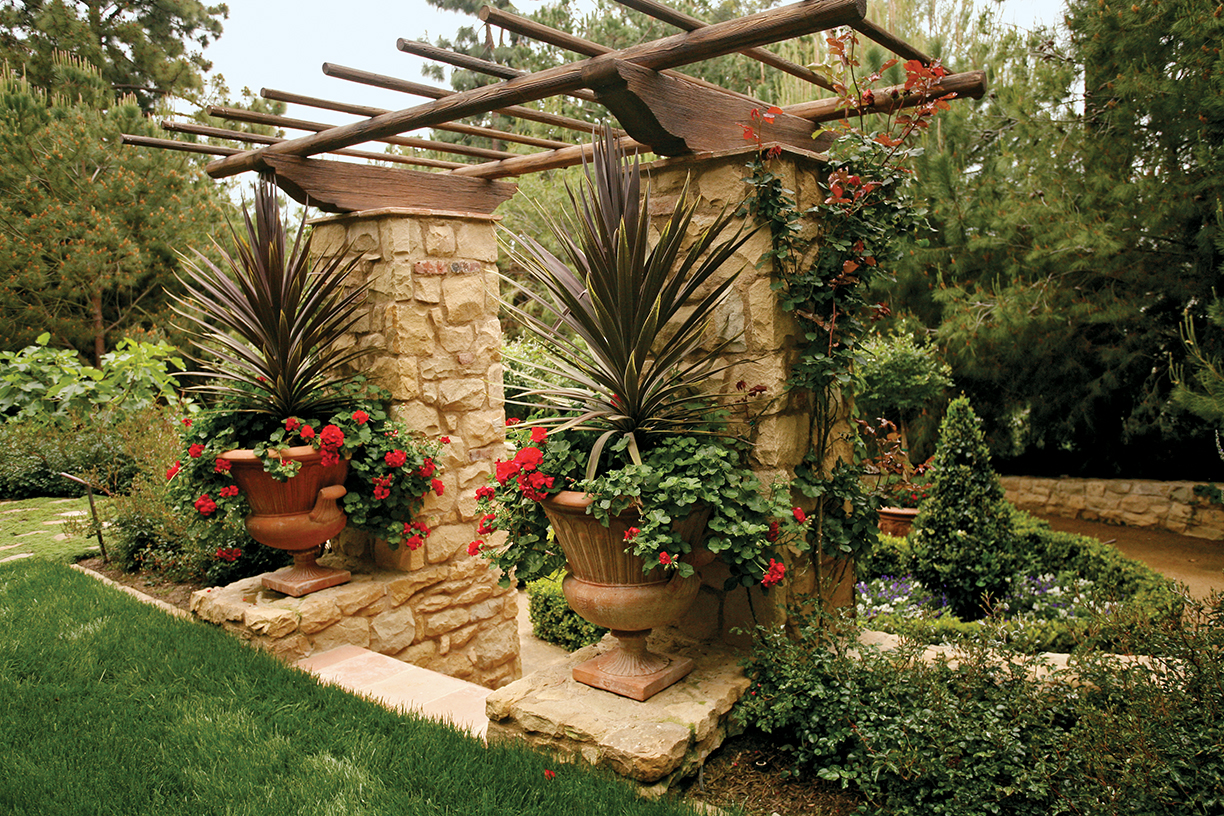
The Four Seasons
“The seasons themselves aren’t a challenge, but an exciting opportunity,” says Pell. “Even thinking about texture and emotion of the dead tissue of herbaceous plants can be an opportunity to compose something beautiful. It’s the same as working anywhere in the world — there are opportunities and constraints.”
While spring and summer’s spotlight is on the flower, that shifts completely when fall arrives. “I never focus on just the flower,” advises Pell. “They are just too ephemeral. They are, of course, an important component, but the structures of the plantings at their worst is where I start. I am looking for plants that look very beautiful in a given composition, and I want the composition to be able to hold up in extremes of weather.”
“Designing through the seasons takes careful planning and a thorough understanding horticulturally on the attributes of trees and plants,” says Kramer. “Floral succession bloom is created by selecting perennials that will create a parade of flowers from spring through to the first frost. This is supported by spring bulbs and flowering trees.”
“In fall, we plant thousands of spring bulbs. It is a late task in season, but such an important one,” continues Kramer. “In the spring, I want the ground to be punctured with green shoots pushing their way forward, poising for their bloom. After months of frigid temperatures and inches, even feet, of snow, New England begins to warm. Those rather odd-looking bulbs we planted are now a sure sign of spring and a reminder that we too, have survived another winter.”
“There’s a lot to be said for winter in the garden,” says Robinson. “It requires you to not do a lot of cut back or maintenance. Generally speaking, you should wait out the things you don’t want there, such as foliage debris and leaf litter — these things are good for increasing organic matter in the soil. You shouldn’t scrape landscape bare — it’s all about layering and allowing that to happen naturally.”
Warmer Climates
While places with warmer climates, such as Southern California or Florida, don’t have the challenges of designing through autumn and winter, they do have seasons of their own: dry season, fire season, and wet season.
“The water use in California really drives what we can and can’t do,” says Zucker, who mentions WELO (Modern Water Efficient Landscape Ordinance) and fire departments regulations, as well as restrictions on paving and the amount of non-permeable landscape a property is allowed to have. “One of the trends that is big in California these days — necessitated by lack of water — is drought-tolerant plants.” These include plants such as succulents or agaves that also offer stunning structural plant material that really create a powerful look for a landscape.
“When I’m working on my designs, I take into account not necessarily annuals or perennials, but the permanent flowers that clients especially desire so that at any time of the year it will be blooming,” says Zucker. “I tend to group plant material together to give a bigger impact. Instead of giving too many species, I pare it down so that aesthetically, from the front yard to the backyard, the whole landscape ties together.”
While Zucker is looking for colorful plantings that can withstand the lack of water, places like Florida experience the opposite — with a wet season that lasts at least half of the year. “Florida winter season can be dramatic. We can go from 85 degrees one day to 28 degrees the next, which is not enough time for tropical plants to acclimate to cooler temperatures,” says Watkins. “The other issues are temperatures averaging 85 degrees for six to seven months out of the year, where our plants can be growing all year, and over 50 inches of rain.”
It’s in these areas where irrigation designers are needed most fevertly along with specialized consideration of the amount of sunlight, soil moisture, soil pH — all extremes associated with the tropics. Without seasonal change, there is also a shortage of compost, plant material and nutrients, which is easily received each fall with the turning of the seasons in other parts of the country.
“I often say, all of life’s lessons are learned in the garden,” says Kramer. “Each season delivers reminders and rituals. It is the moments on which lives are built and cherished.”
Give your home a new spring in its step with colorful windows and doors that will draw the eye and boost curb appeal.
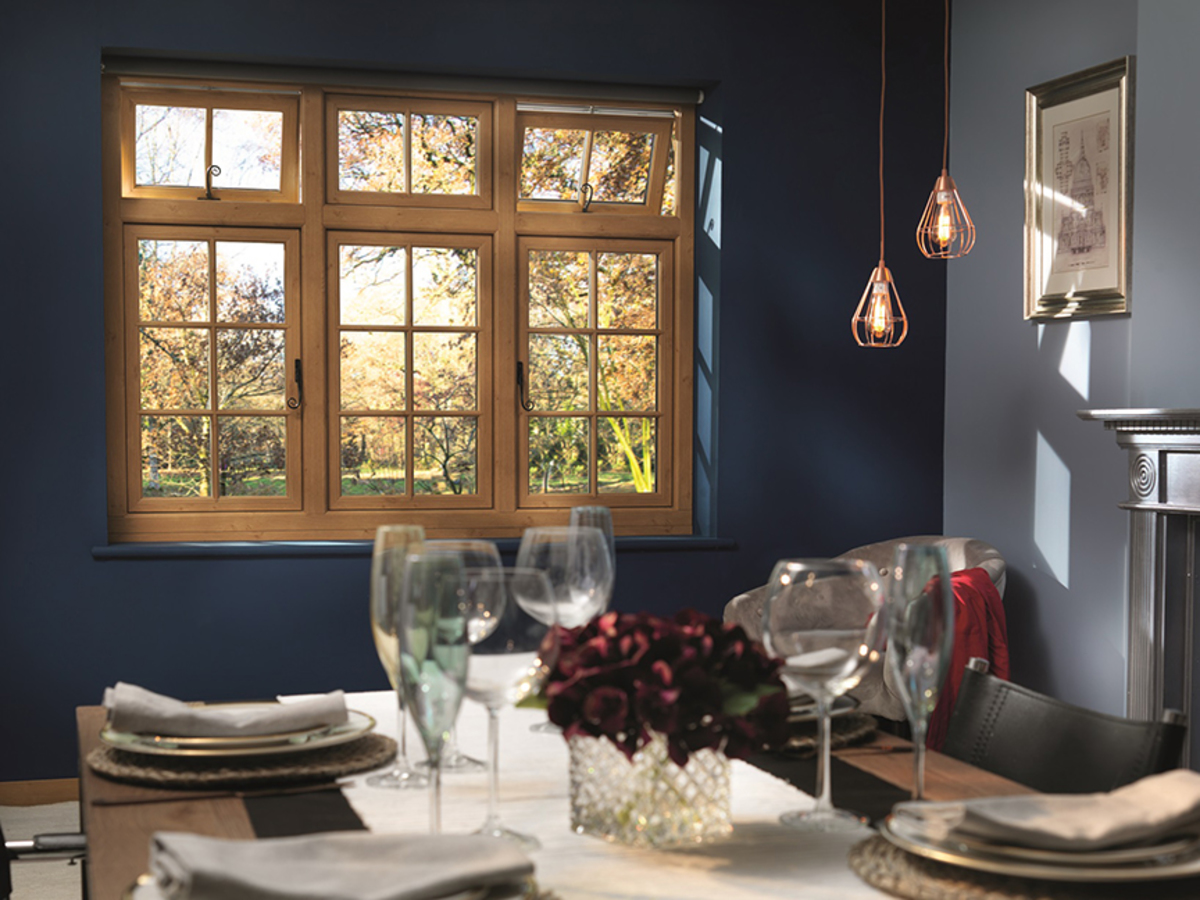
Replacing white window frames with colored ones, and a matching or contrasting door can make your home stand out from the crowd and give the impression that you have specifically chosen them to suit your property, rather than just sticking with what is currently in situ.
All of Evolution’s timber alternative windows and doors are highly energy-efficient and virtually maintenance-free.
Follow these tips if you are upgrading your windows or doors.
Color matching
Evolution offers 10 standard, timber-effect finishes (including white, black and three shades of gray) to complement traditional and contemporary properties. Alongside these colors, Evolution offers a bespoke color-matching service with over 200 RAL colors to choose from. Aside from the current trend for gray, homeowners often choose pale green or cream to give country cottages a classic look.
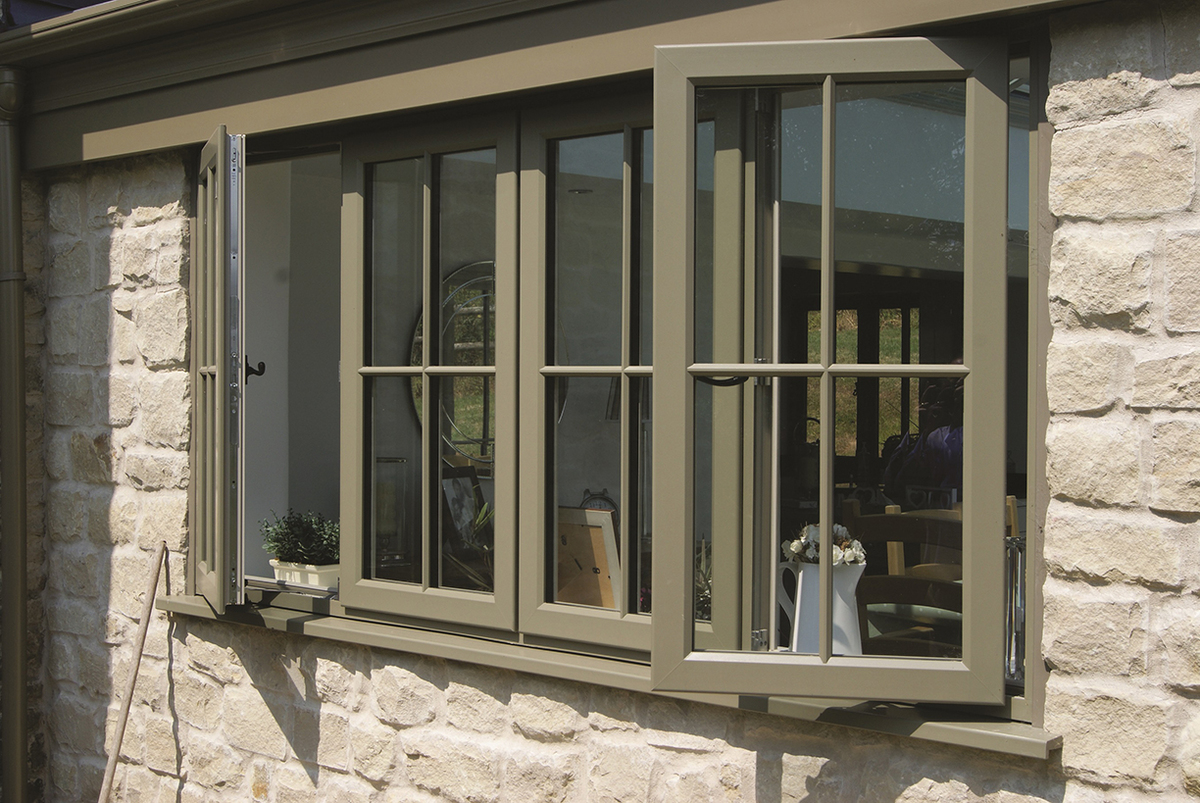
Fifty shades of gray
Gray doors and windows are leading the way in the popularity stakes and the trend doesn’t seem to be showing any signs of waning. There are infinite shades of gray, but Evolution’s most popular choices are olive-gray, agate gray and anthracite gray. The lighter olive and agate grays add an elegant feel to character properties, while anthracite creates a more contemporary finish.
Black or white?
Whilst white gives a clean, contemporary finish, black window frames are becoming more popular. Often thought a contemporary choice, black window frames can also enhance traditional properties, particularly those with leaded windows, such as Tudor-style homes.
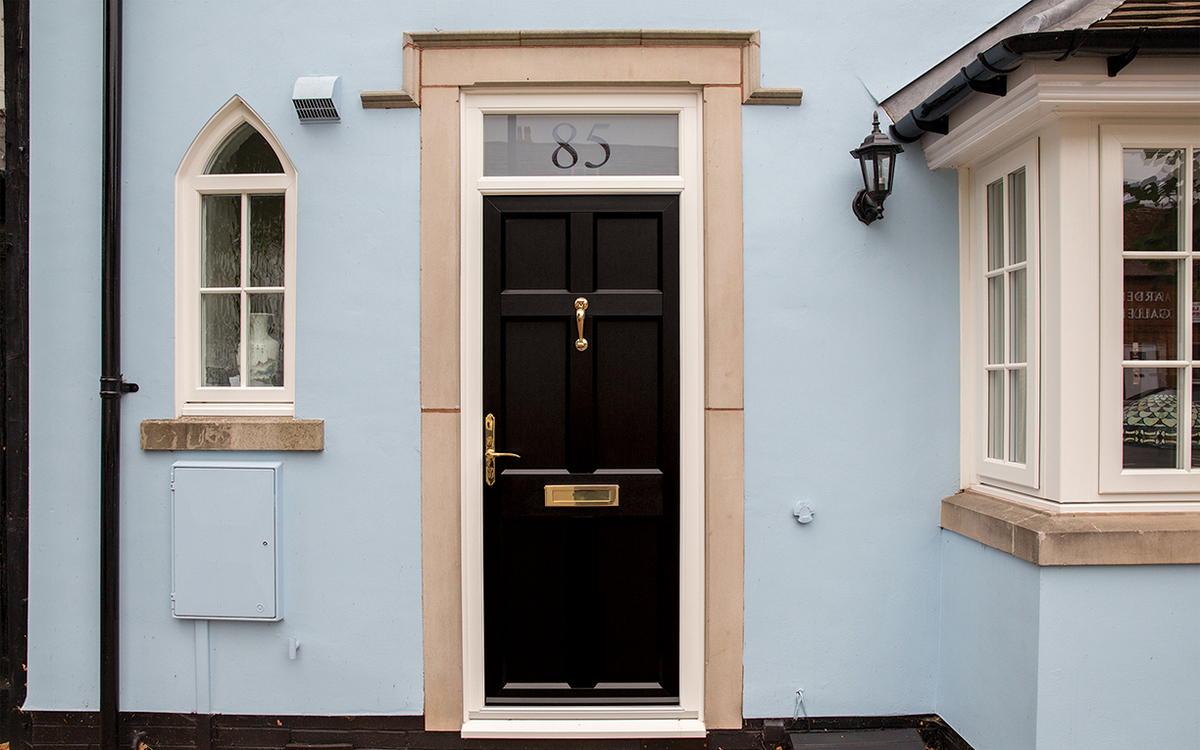
Timber colors
Timber colors are still a popular choice for doors and windows. Timber colors, such as oak, natural wood or rosewood, can enhance traditional properties, but also look fabulous on contemporary homes.
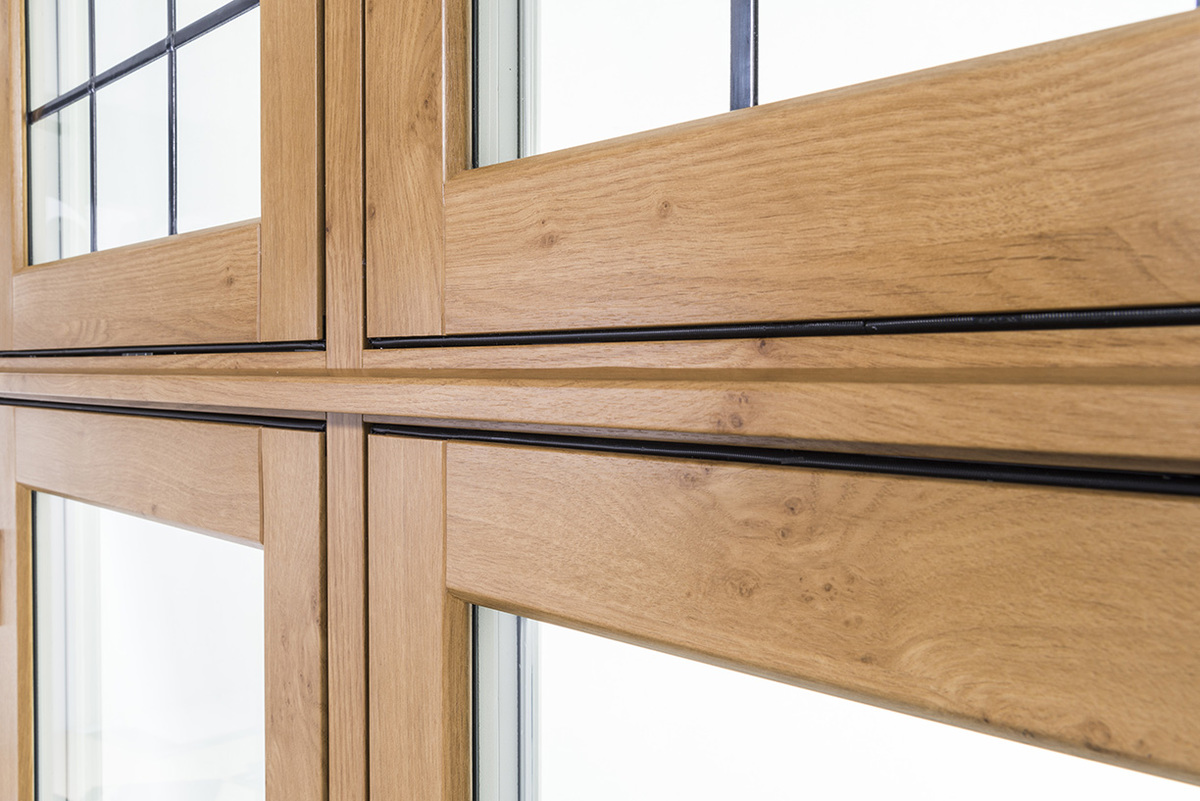
Inside out
One of the advantages of Evolution’s timber alternative doors and windows is that you can choose to have a different color on the inside. While many love the idea of having colored frames or doors to enhance a property’s exterior, white is still the most popular choice internally to avoid clashing with interior décor.
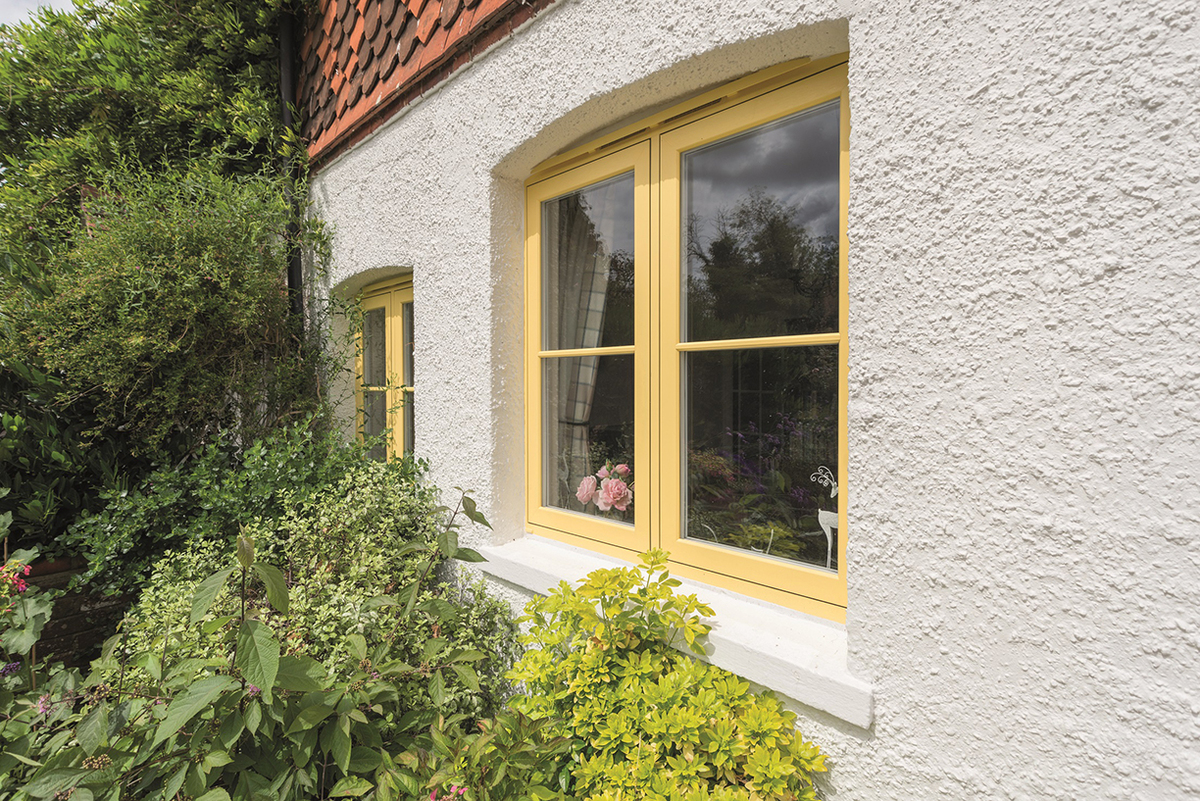
Photos courtesy of Evolution Windows
Lovers of Scandi’s enlightened sense of style will rejoice at the discovery of the beautiful Farringdon and Dorset collections of reclaimed wood furniture from Modish Living.
Modish Living was founded by husband and wife, Chris and Hellen Barlow in 2012 with an idea born around a wooden kitchen table to create an online boutique selling a handpicked collection of beautifully crafted, reclaimed, rustic and sustainable wood furniture.
Renowned for its simplicity and beauty, Scandinavian style shows no sign of losing its popularity in homes and interiors. Its pared-back and minimal style have evolved into a more cozy feel, focusing on sculptural organic shapes, earthy pigments, natural materials and textures, such as wood.
Everything from tempting trestle dining tables and family-friendly extendable tables to a welcoming wood bench and seriously stylish sideboards, these naturally rustic additions will add an instant Nordic vibe to your dining space. Made using aged reclaimed wood rescued from old buildings, Modish Living’s Farringdon and Dorset collections are the perfect fit for Scandi design devotees. Skillfully crafted to enhance the natural tones of the wood and given a renewed sense of purpose and style, these pieces evoke a sense of comfort, style and happiness.

As well as providing essential storage, this sideboard has a natural beauty and character. The natural markings of the reclaimed wood shines through the white painted finish, giving it a lived-in authenticity perfect for a Scandi feel dining room.
The distressed white base of the Dorset Extendable Trestle Table keeps the aesthetic neutral while adding warmth. Accessorize with a sheepskin rug and the large white bamboo pendant is styled here.
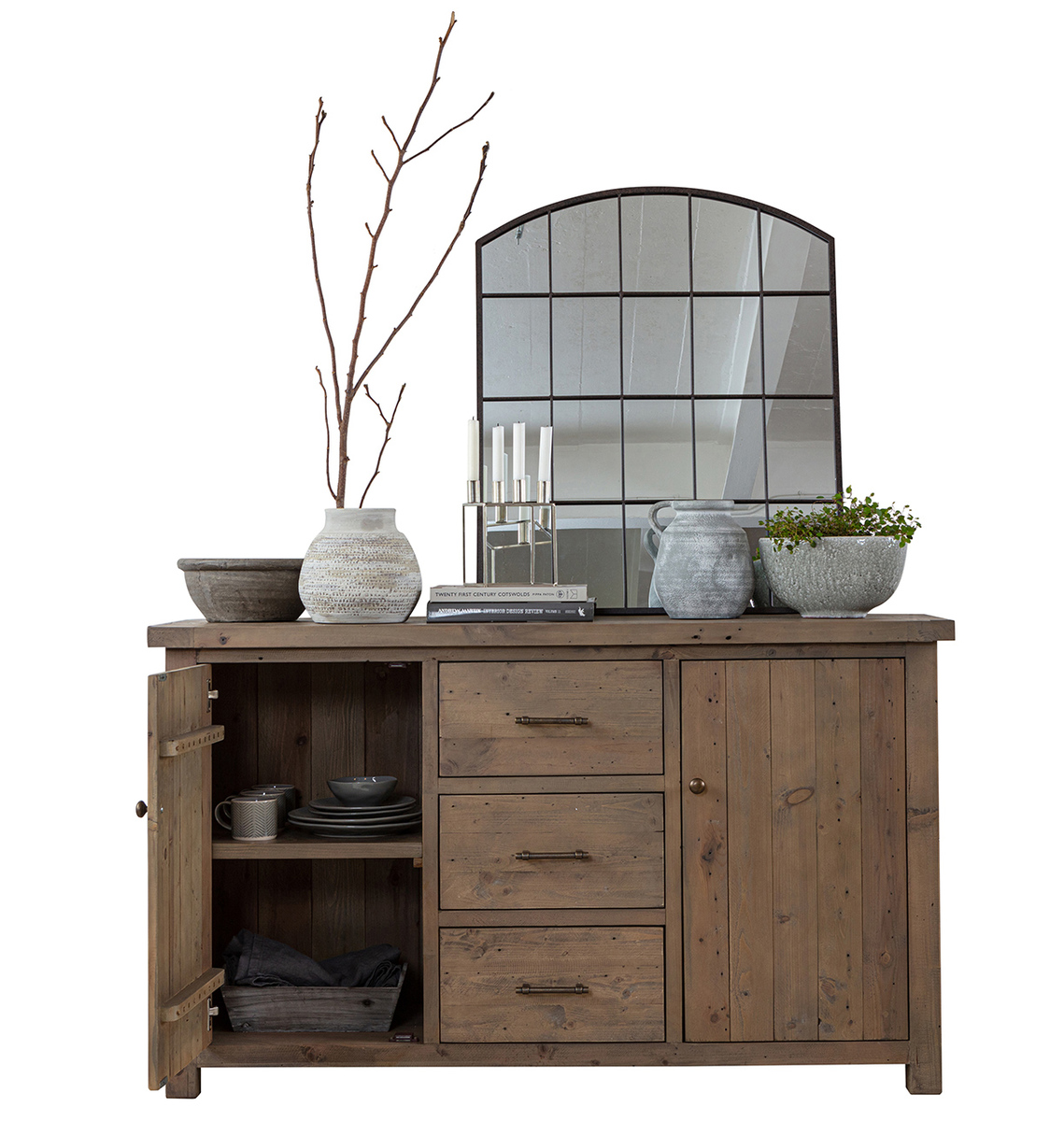
Three central drawers and two large cupboards offer plenty of storage for your kitchen essentials. The subtle lacquer accentuates the natural markings and history of the wood, whilst giving it a distinct Nordic feel.
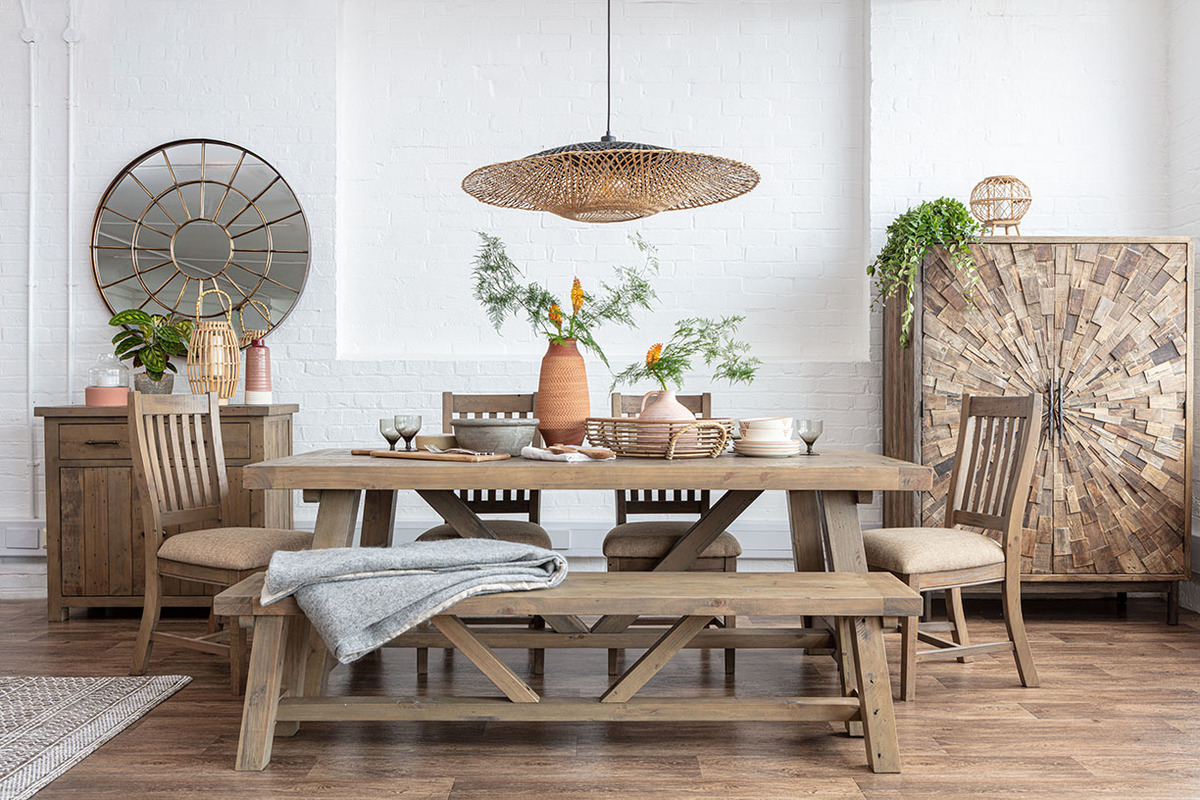
The large pendant above the Farringdon extending table is made out of biodegradable woodchip; the perfect pared-back accessory to complement this 100-percent reclaimed wood collection.
Photos courtesy of Modish Living
It’s time to start thinking about resolutions. The new year is the perfect time to make changes and create a fresh perspective. Follow these 3 tips from Rebecca Snowden, Interior Style Advisor at Furniture Choice, for more mindful living in the new year.
Everything is fast, easy and digital, yet natural instinct pushes us to disconnect and slow down to regain our sense and quality of life.
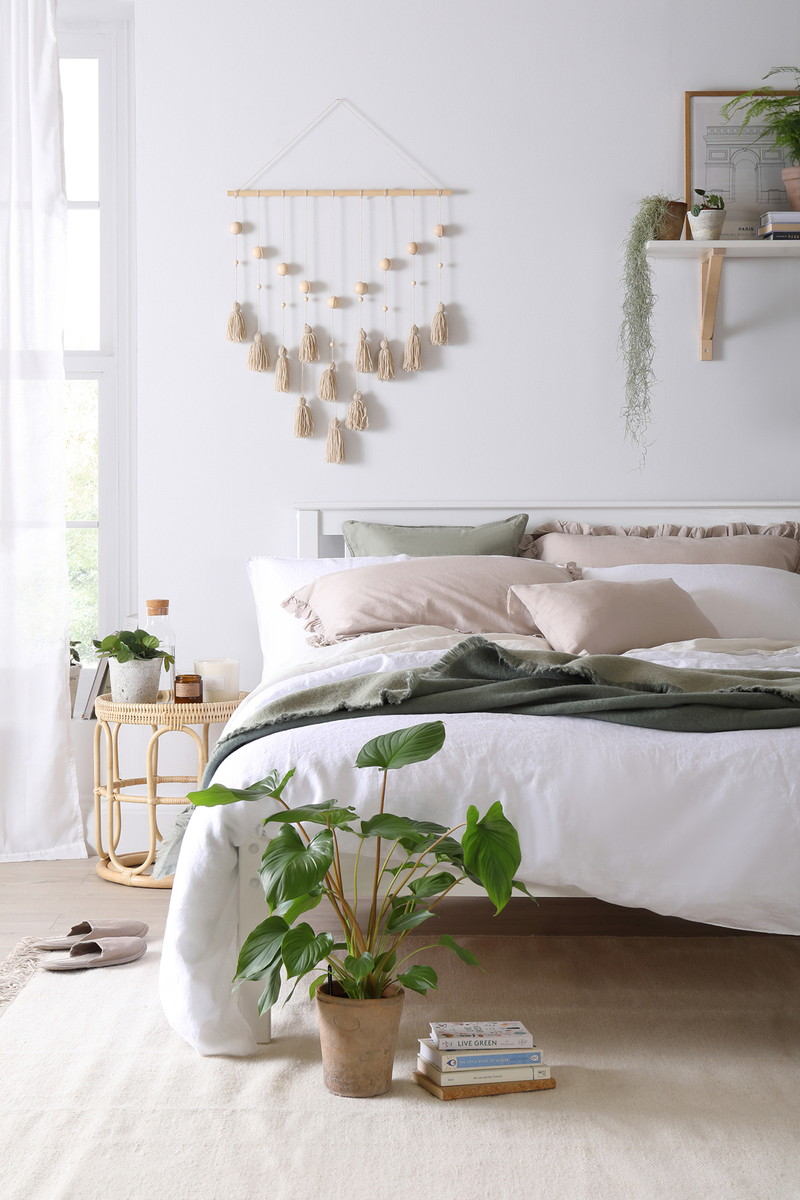
1. Start with a clean and calm neutral palette
Begin the year refreshed and rejuvenated with the help of a home environment that focuses on living well.
Start by introducing a quality of softness into the home, coupled with interior design that’s comforting and inviting. “Let the intention of creating a clean and soothing ambiance guide your design decisions,” advises Rebecca. “Ultimately, the goal is to create a personal haven you’ll love going home to relax in.”
Make it a priority to get plenty of good quality sleep. In the bedroom, an oatmeal fabric bed presents the perfect starting point in a space meant for restful slumber. Introduce neutrals in varying tones for interest and depth. Safe, perennial hues to try to include white, soft grey and the recently popular greige.
Select comfortable bedding with minimal prints to focus on creating an uncluttered, restful environment. Where possible, go with furniture that features curves and organic lines instead of sharp, straight edges.

2. Nature is nurturing
Nothing relaxes the mind more than being surrounded by nature; particularly, plants. Start the year on a green note by maximizing on the benefits of having indoor plants. Choose a mix of large and small greenery and varieties that help clean the air. Leafy, trailing plants also inject a little wildness to create a tropical-inspired ambiance.
Besides making the air fresher, their lush green color is soothing on the eyes after a long day of working with screens.
To continue the natural theme, pick furnishings made with materials like wood, rattan, or clay. “The warmth and rawness of their surfaces contribute to a design that has a soothing, back to nature vibe,” says Rebecca.
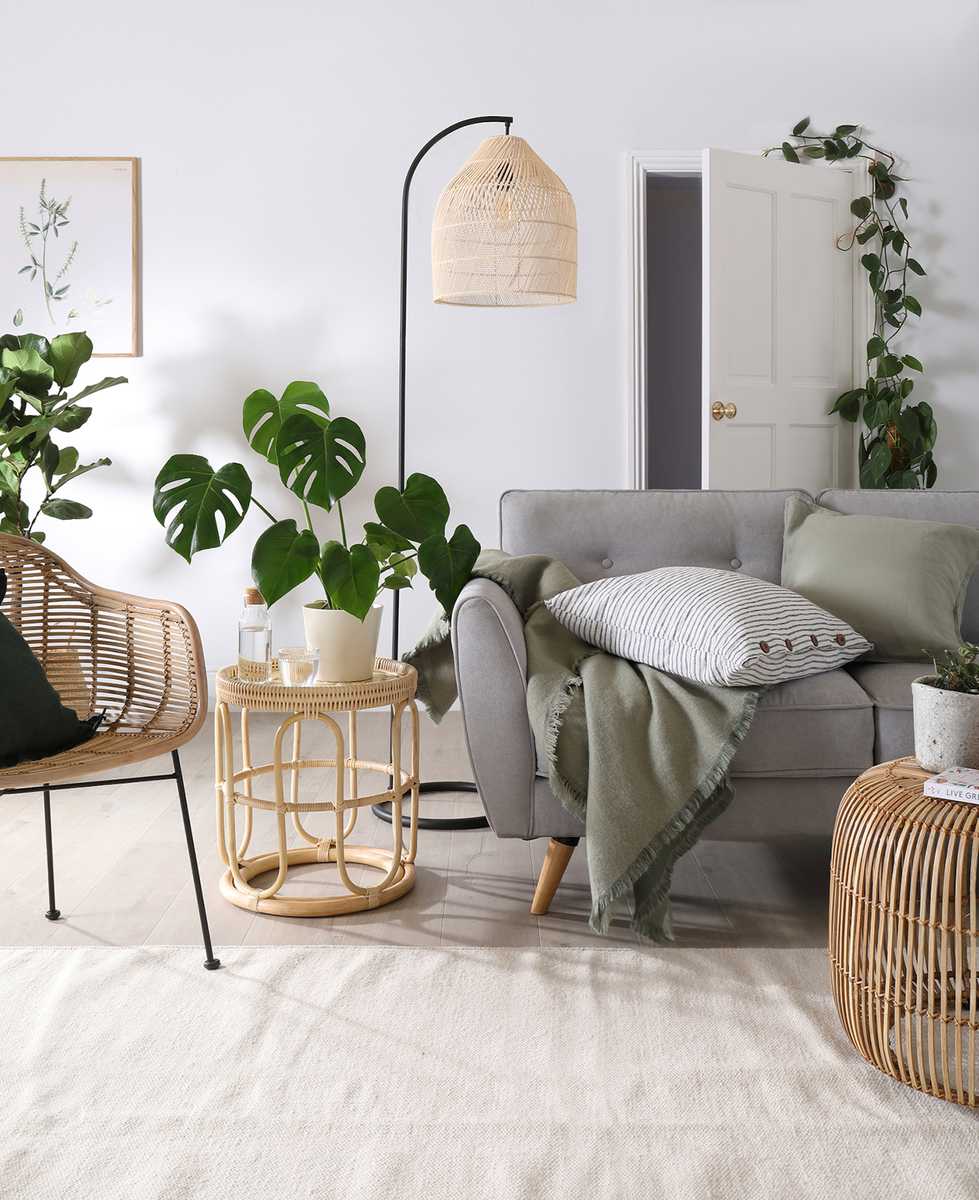
3. Dedicate a corner for conscious relaxation
As a reminder to make wellbeing a priority for the year ahead, allocate a corner that’s dedicated to relaxation. “A little nook will do; you’ll only need enough space to practice your preferred stretches,” says Rebecca. For meditation and stretching exercises, fit it out with a yoga mat or thick rug. “And if you have a work desk at home, it’s a good idea to carve out a zen zone within the same room for quick stretch breaks.”
Maintaining the same neutral palette, style the space in light hues, and include plenty of plants. Another factor to consider is the accessibility of natural daylight, as it can help reset a confused circadian rhythm. A wellness-inspired space that embraces disconnecting and being present will likely become a favorite spot in the home.
Photos courtesy of Furniture Choice Ltd
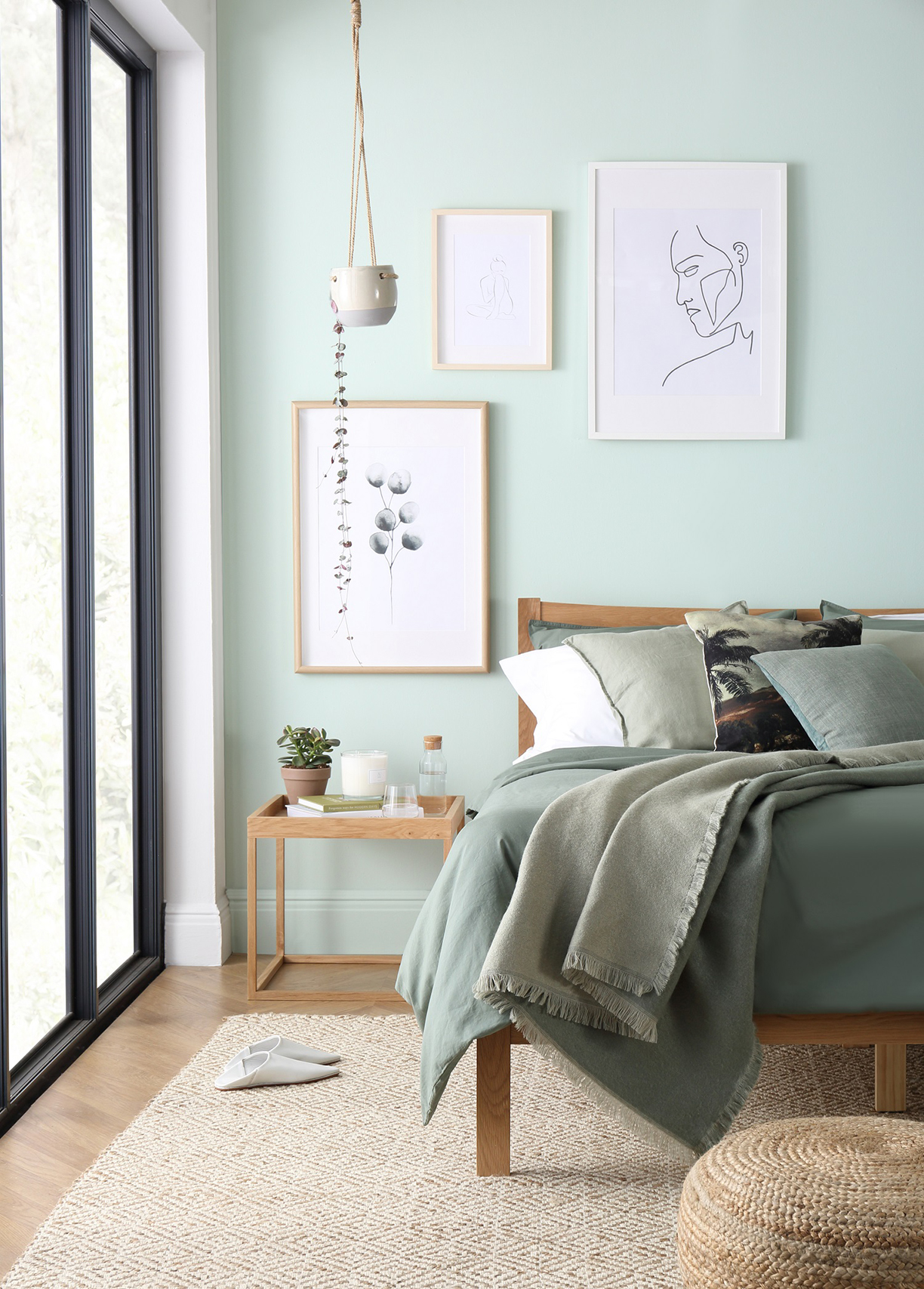
All photos courtesy Furniture Choice Ltd.
The color green symbolizes life, renewal, harmony and growth and is set to steal the limelight for the year ahead. With people getting busier and the increase of screen time for work, this calming color is a gentle nudge to unwind and rejuvenate.
Reminiscent of nature and the outdoors, using green in the home also serves as a reminder to be more eco-friendly and sustainable where possible.
Rebecca Snowden, Interior Style Advisor at Furniture Choice Ltd., shares 4 ways to bring this color into the home.
Use green as a feature wall color
Serene and soothing, green makes for a great feature wall color. From darker shades like emerald green to brighter hues like apple green, the color offers many psychological benefits. These include helping to induce relaxation and serenity, as well as giving off feelings of optimism and growth.
Because of its benefits, this color and its many shades can be applied to many different rooms.
For example, home offices can benefit from a green feature wall as it helps soothe tired eyes. Similarly, sage green is a relaxing color that’s perfect for a bedroom feature wall, as it creates a calm and airy atmosphere that’s lighthearted and uplifting.
Some other accessories and textures to consider are jute, leafy plants and candles for relaxation. And where there are windows, choose sheer white curtains to allow sunlight in while maintaining some level of privacy. “The natural light will also cast a lovely glow on the sage green wall and give the color a little pop,” Snowden says.
Pastels are the perfect lighter alternative
On the pastel front, neo mint is set to be very fashionable in 2020. “It’s young, fresh, energetic – great for pairing with an equally sunny color like coral,” says Snowden. “Brighten up a small space or designate separate functional areas by way of color blocked walls.”
Balance the boldness of neo mint walls with simple, neutral furniture like a white bed. Select furniture with slim legs and clean silhouettes to achieve a clean look. Alternatively, layer on rugs and cushions within the same palette for a maximalist approach.
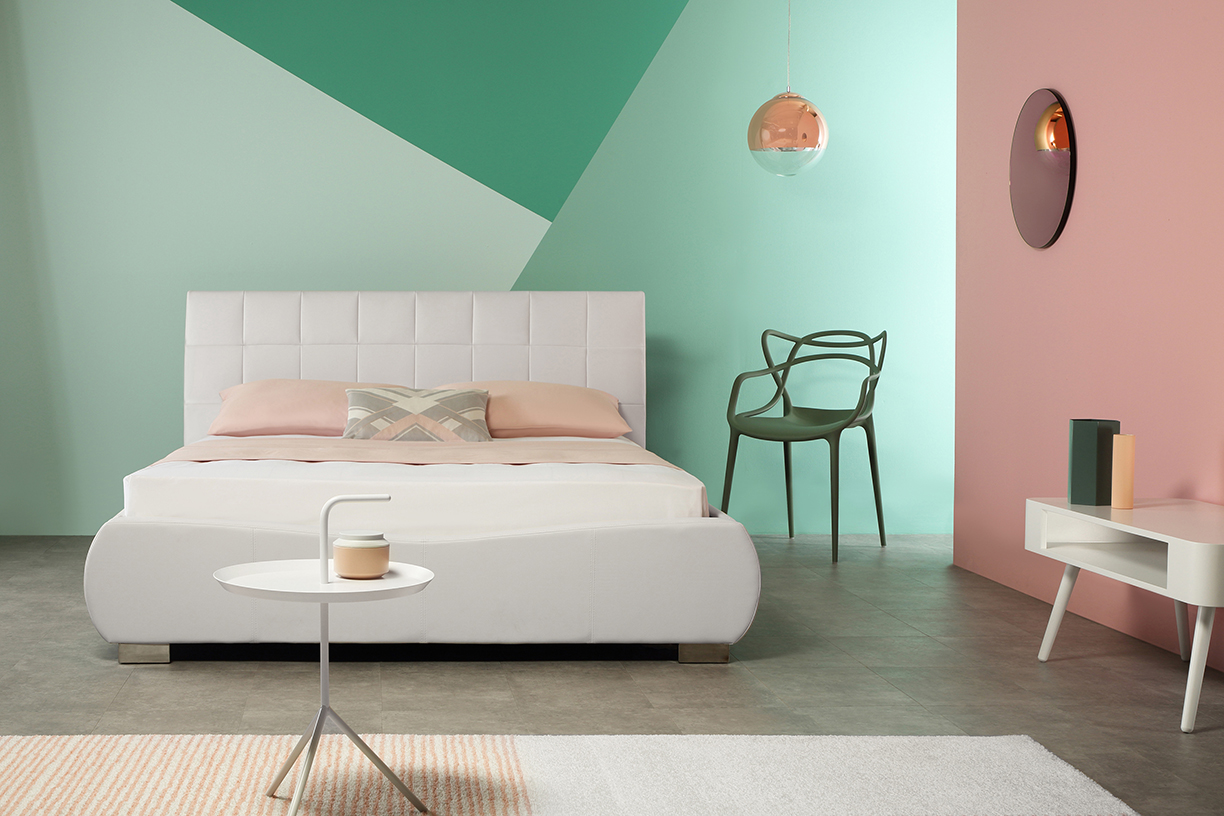
Statements pieces are key
Make a statement for the new year and invest in larger green pieces, such as an elegant green velvet sofa. The sumptuous material enhances the richness of an emerald green and adds depth to a space. To those anxious to make such a bold choice, Snowden notes that “a green velvet sofa is easier to pull off than you might think. It is incredibly chic and luxurious yet laid back enough to suit most interiors.”
Style with brass finished planters or side tables for a lavish look, or matching dark wood furniture for something classic and cosy. “Bold yet versatile, a green velvet sofa is easy to dress for the seasons and set to become a talking point of the home,” she says.
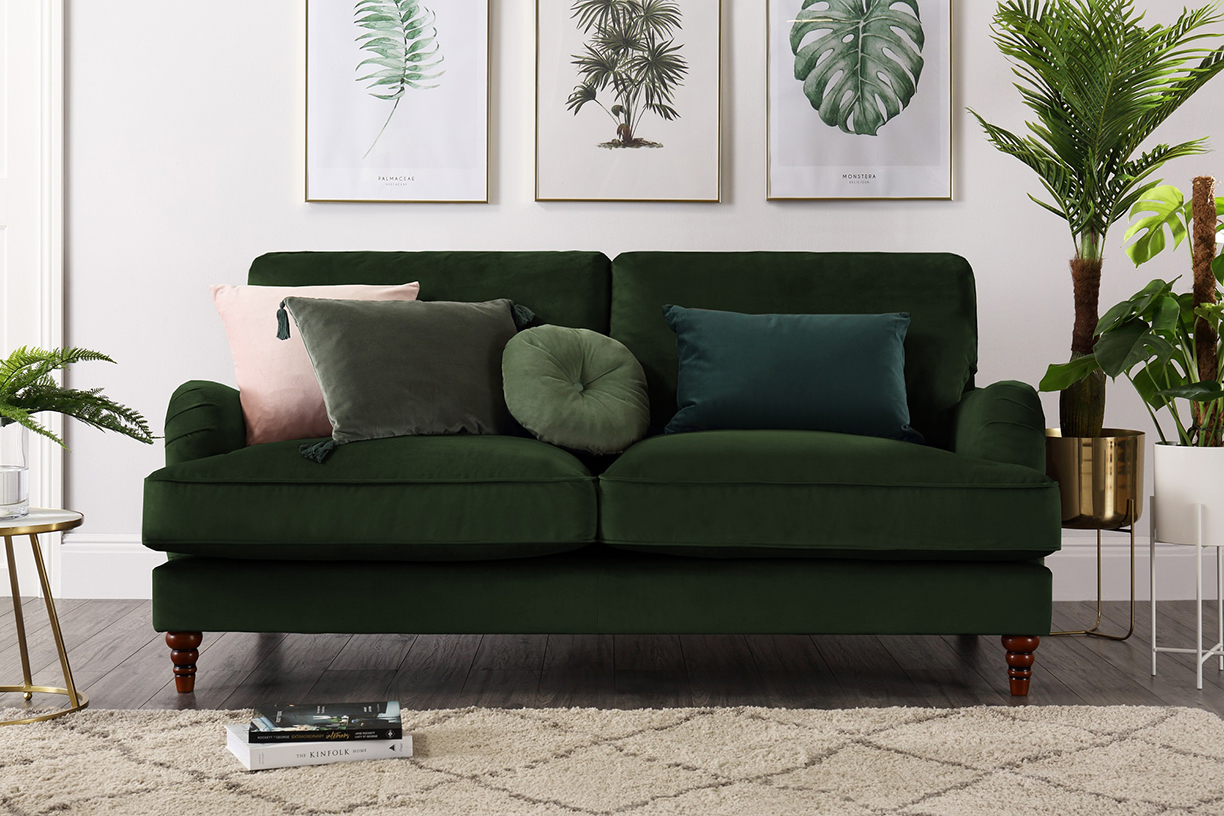
Houseplants are a designer’s best friend
Live green plants are the best accessories for decorating the home in shades of green. Some help clean the air and release more oxygen for easier breathing while others bear fruit for eating. Mix and match plants of different green shades for depth and interest in the home.
“Leafy, trailing plants inject a little wildness for an urban jungle feel while demure little succulents are adorable and easy to manage,” Snowden notes. “Plants are quick additions to the home that make a big impact on our wellbeing – a big focus for 2020.”
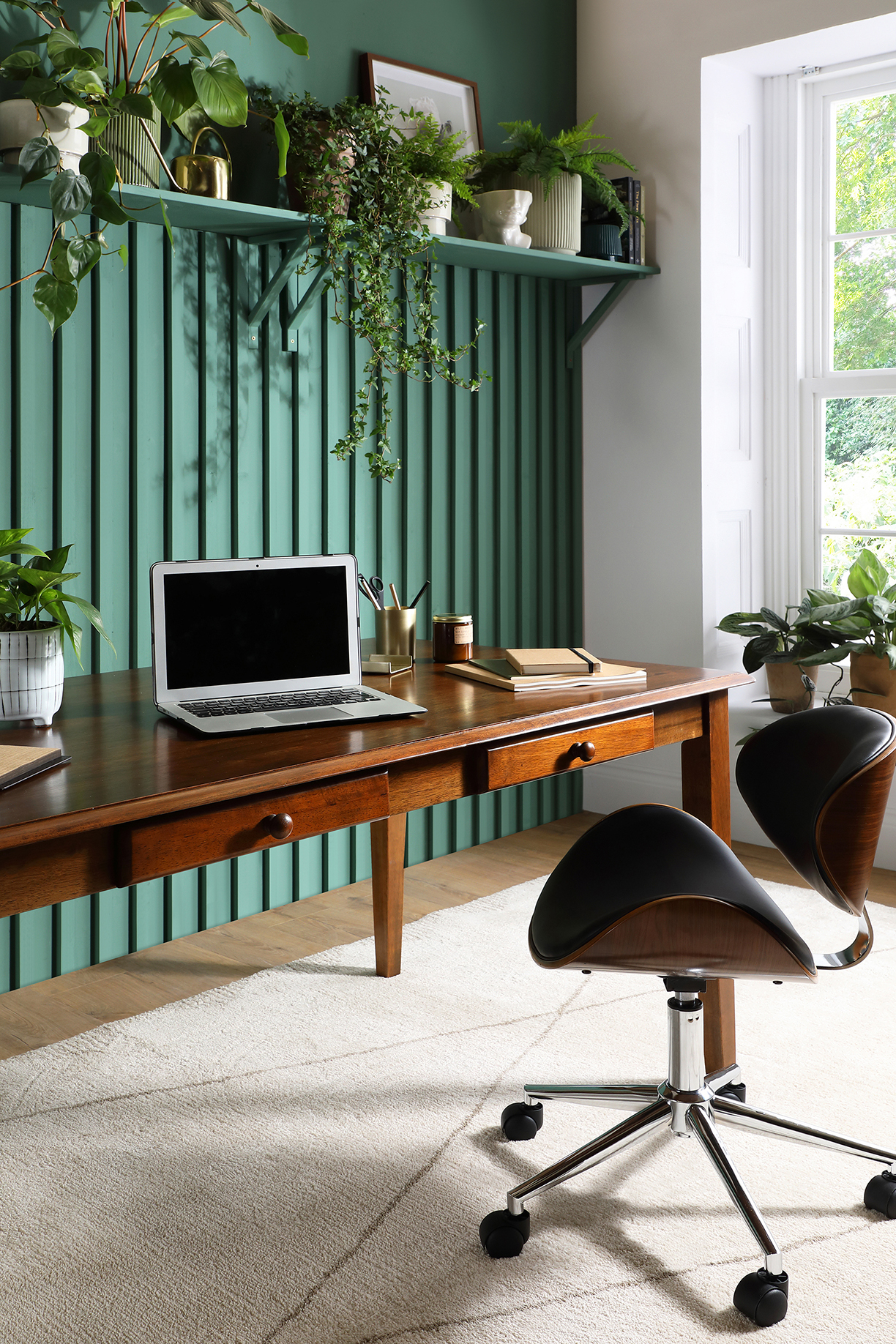
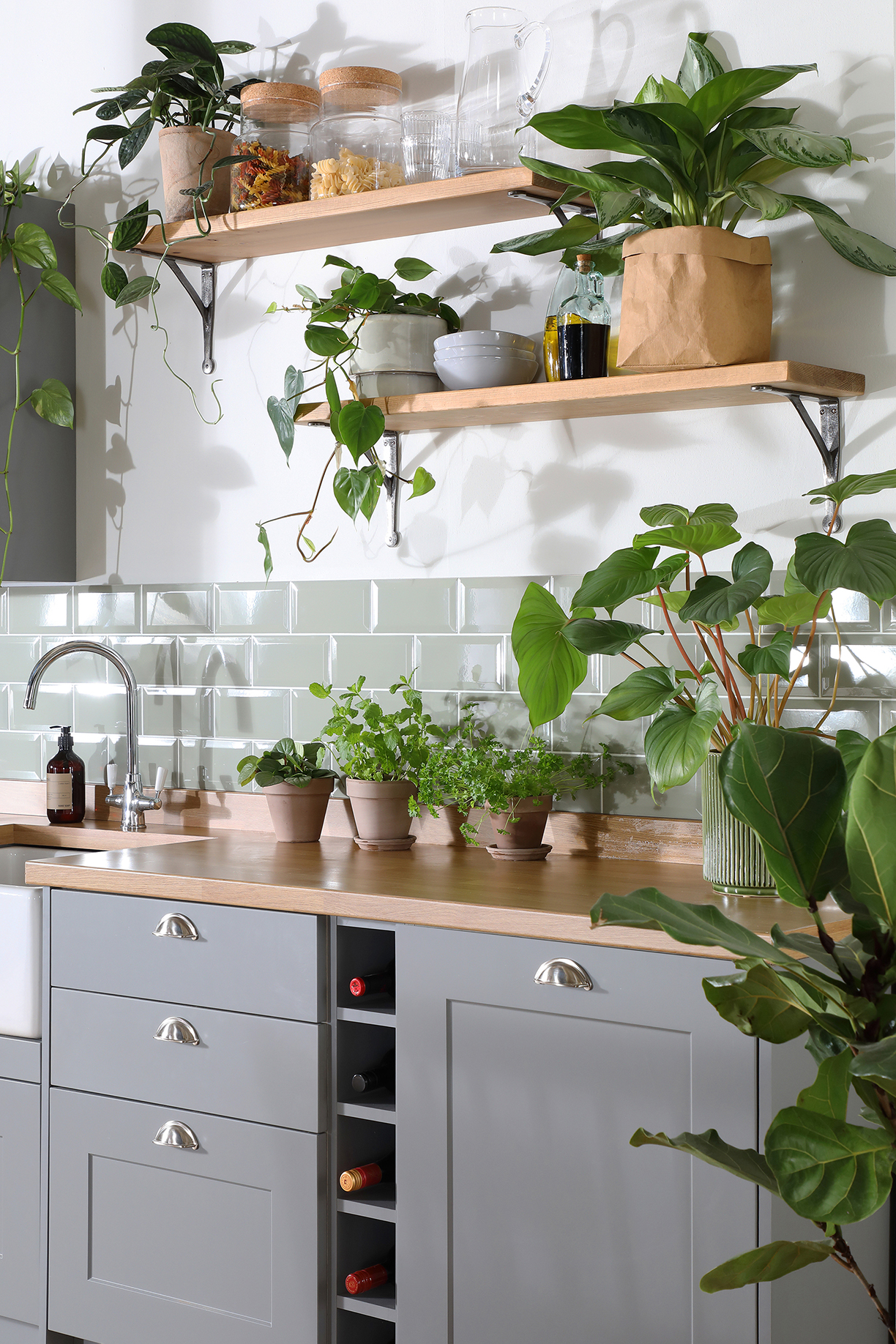
New Ravenna, a designer and manufacturer for both residential and commercial installations, offers unforgettable collections of custom stone and glass mosaics that are envious and full of detail.

The handcrafted mosaics are fashioned into decorative borders, murals, fields, and medallions. Mosaic materials are polished, tumbled, honed and cut to create distinctive styles, subtle shade variations, and textures. The installations are custom works of art in mosaic tile, which often incorporate the designs of architects, interior designers, and their clients. Keep reading to learn more about their collections.
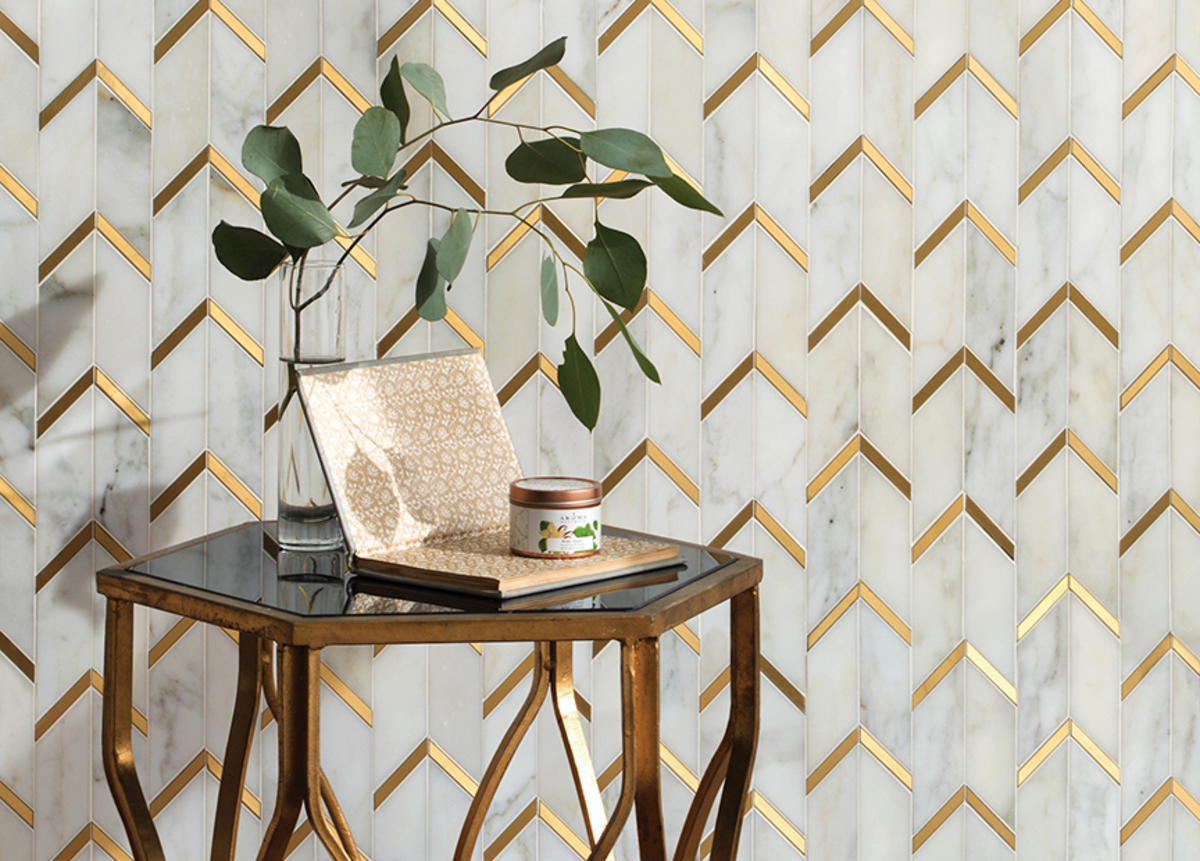
Bright Young Things™ is a collection of 26 mosaics in stone and glass with shell, brass, aluminum, and zinc accents. The collection was inspired by the exuberant and glamourous British aristocrats and socialites of the 1920s. It was a time that saw the emergence of art deco, jazz, and a bohemian spirit in literature, photography, and theatre. The collection introduces two new finishes; the leather-worn surface of Orpheus Black stone and hand-sanded metals, which create a velvet texture with brilliant shine.
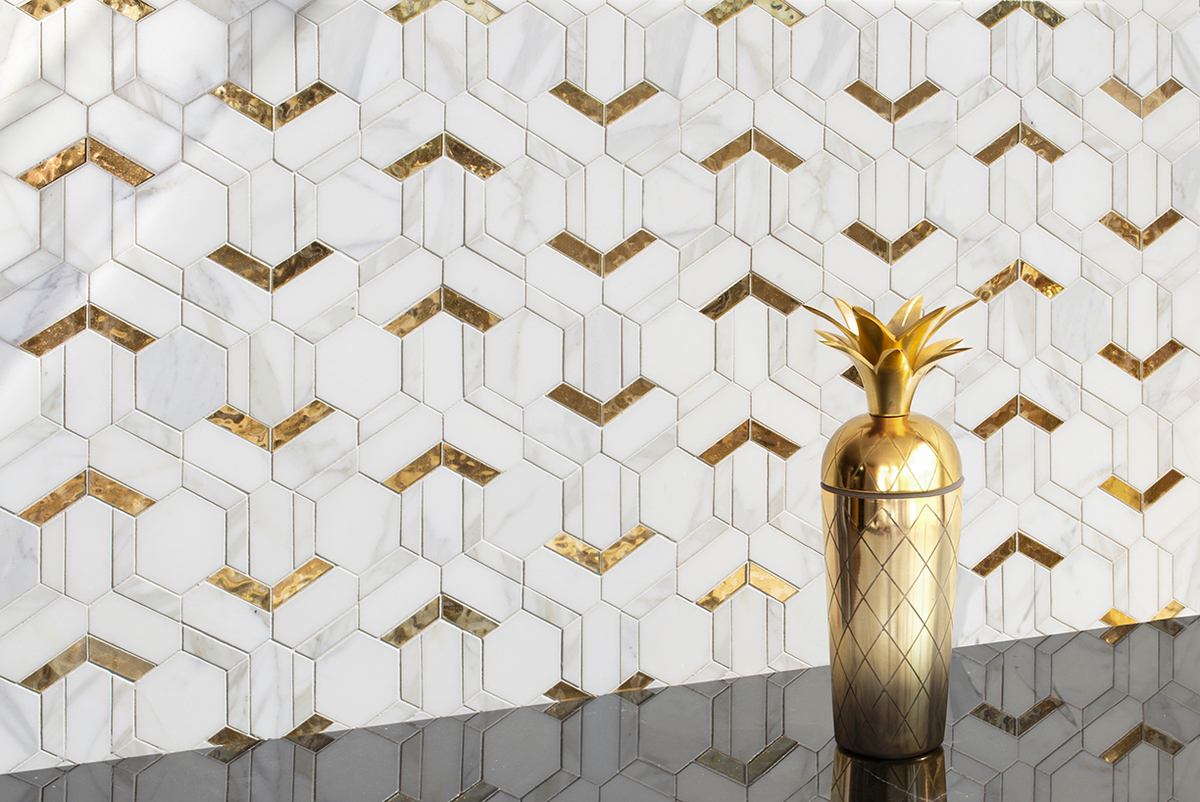
By interior designer, Paul Schatz, the handmade mosaics are presented in a variety of colorways using natural stone, glass, and metal, with highlights of 24-karat gold glass, glazed Basalto, ceramic, and Serenity glass. The materials have been pillowed, tumbled, hand-chopped, and cut by hand or waterjet. In this expansion of his original Miraflores collection, Schatz has incorporated his study of classical architecture, extensive travels, and fascination with textiles inspired by indelible childhood memories.
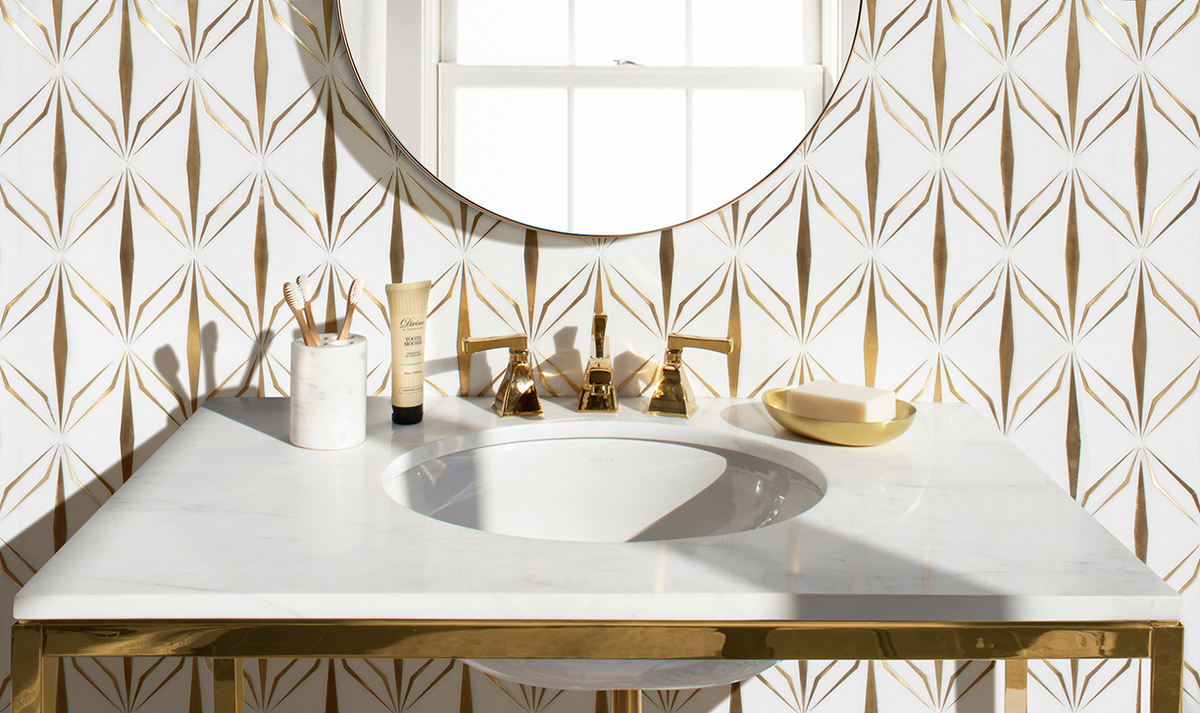
Liliane is a collection designed by Paris-born Caroline Beaupère. The designer’s memories of summers spent on the French Riviera-inspired the nine mosaics, hand-crafted in natural stone and glass with metal accents. The enchanting gardens, architecture, and culture of the Côte d’Azur are represented in design, color, and texture. “Growing up in the South of France, I spent all my summers on the French Riviera: the Liliane collection is named after my grandmother who had a house in Cannes overlooking the Mediterranean. It is a journey through the French Riviera’s most beautiful gardens and an homage to its spectacular light and lush vegetation,” says Beaupère.
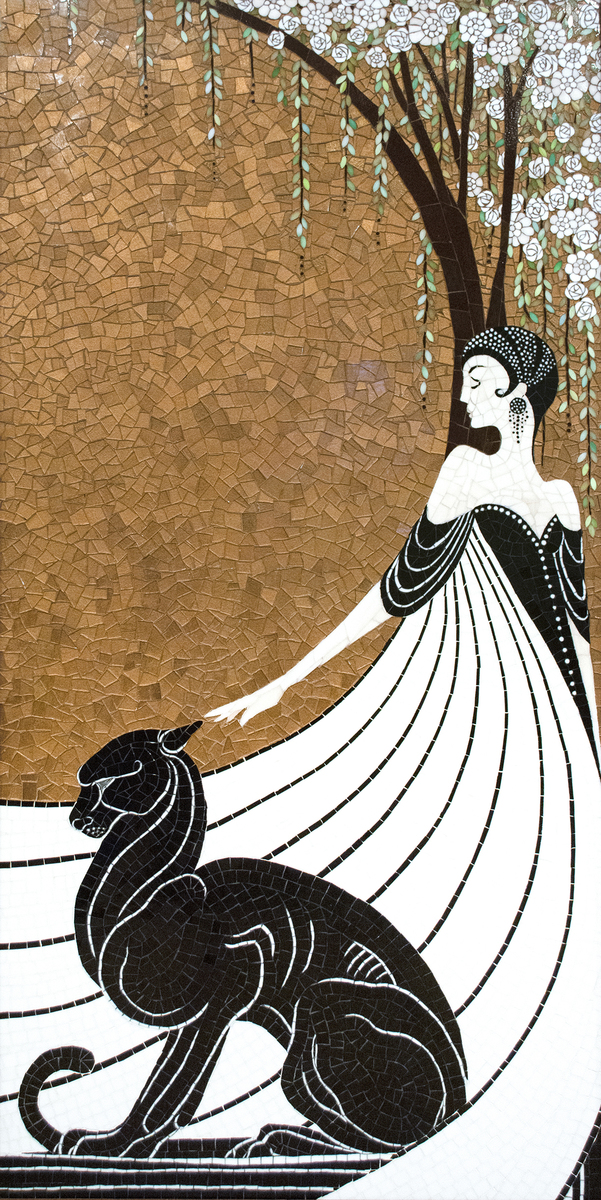
La Panthère Blanche and La Panthère Noire
The custom panels are inspired by Erté, the pseudonym of Romain de Tirtoff, the 20th-century artist and designer known for his glamorous art deco stage sets, jewelry, costumes, sculpture, and graphic design. The Russian born artist moved to Paris when he was 18 beginning his career as a fashion illustrator creating stylized sinuous women draped in elegant bejeweled clothing. In art deco iconography, the panther is symbolic of independent femininity, grace, and speed. The handcrafted panels are created in Absolute White, Obsidian, Champagne, Peridot, Emerald, and Mirror jewel glass, with a 24-karat gold glass background.
Photos courtesy of New Ravenna
With this new year comes change, especially when it comes to home interiors. As 2019 comes to an end, we are looking at trends for 2020 and how our sense of style is bound to change.
From playing with both bold and neutral palettes to prioritizing minimalism and living clutter free, it’s time to celebrate the new year with a new aesthetic. With advice provided by top brands like Alexander Joseph, Pantone, and others, ring in the new year with these expert design tips!
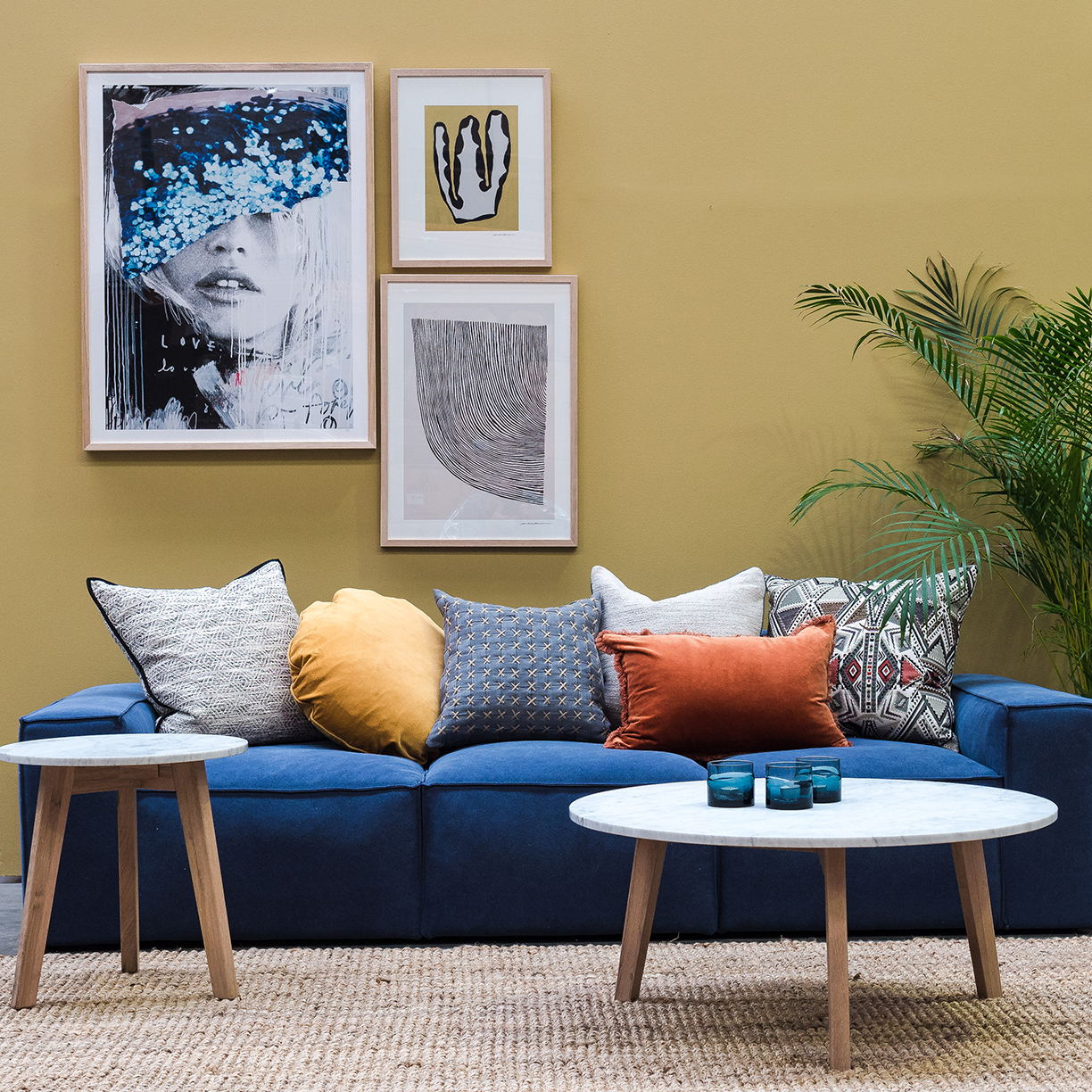
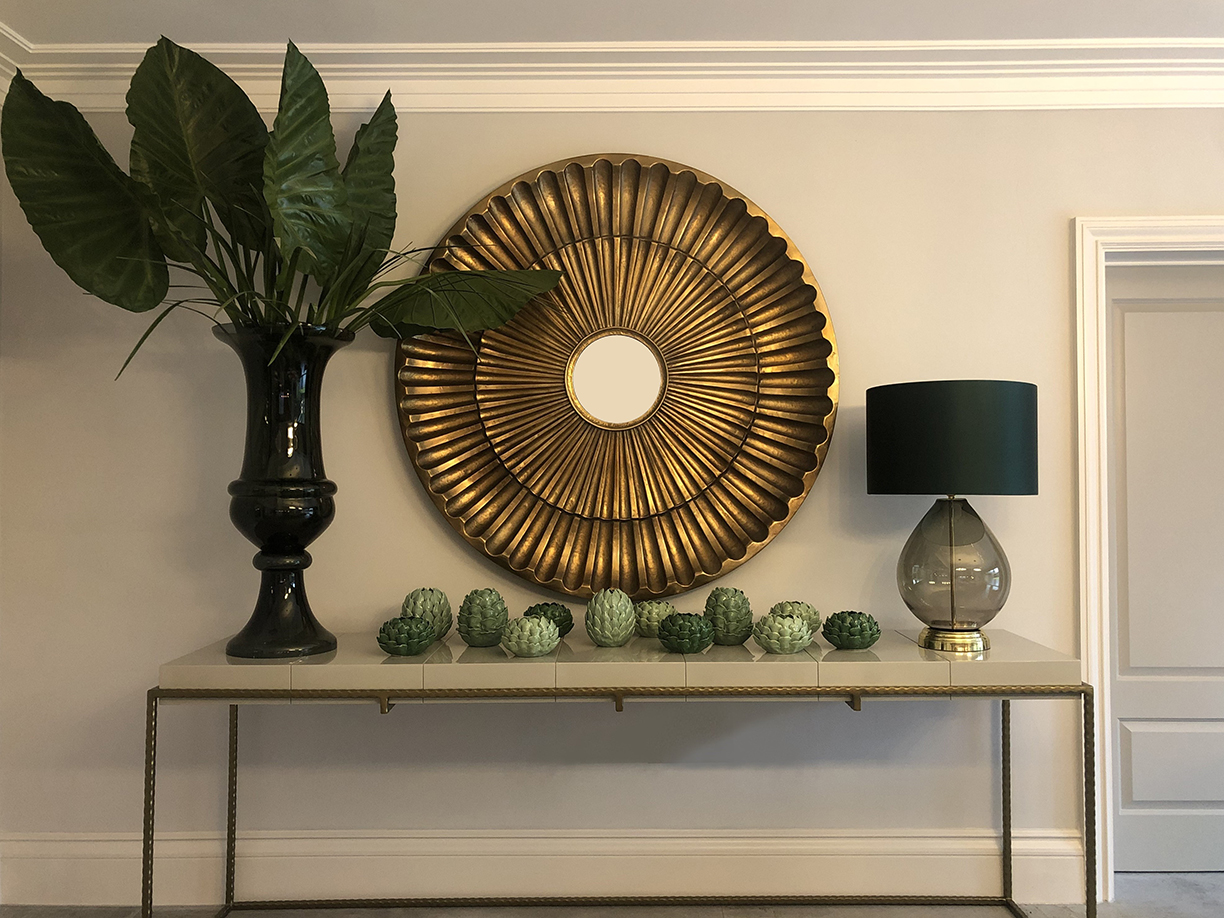
The Bold and the Neutral
As people are becoming more daring when it comes to designing their living space, the use of vibrant home accessories will no doubt be seen far more. Bold colors, such as jewel tones, are a feature of design that we believe will be used increasingly in the new year.
Popular colors that we will be seeing more of include dark red, olive green and classic blue. Classic Blue has been chosen as Pantone’s Color of the Year for 2020. This color is ideal for interiors as it symbolises trust, confidence and intelligence among other things.
One of the most common concerns of using bold colors is that it will be overpowering. To help ensure a balanced color scheme, try using a few different colors that complement each other well. This helps to make more of a statement as opposed to a room full of just one color.
If your decorating style is more neutral, there are ways you can add warmth and character to your room, without using color. Using a neutral colour palette doesn’t mean plain and dull, and there are plenty of ways to add even more to a simple design.
Use texture, patterns and layers to add depth to you room. If you have a beige seat, use a fur or knitted blanket for layering, and with cushions, add a pattern, or detailing, such as tassels or fringe, to make the area stand out more.
Plants can also be used as the perfect accessory. Not only do they look aesthetically pleasing, but they are also beneficial to your health. Adding plants gives you a reason to let in more natural light, a great way to boost happiness within any space.
Top photo courtesy Satara Australia. Bottom photo courtesy Alexander Joseph.
Geometric Shapes
Geometric shapes have always been popular in the interior design world. Patterns and shapes are found everywhere, from walls and floors to prints and fabrics – no matter where you shop, there will always be something with a geometric print on it.
An appealing feature of geometric shapes is its diversity. There are so many different possibilities with patterns, colors, shapes and designs. For a funky and unique look, you can use bold colors and a thick-lined pattern on your walls. If you want to stick to a simpler and more traditional interior, patterned cushions work well.
Photo courtesy Wallsauce.com
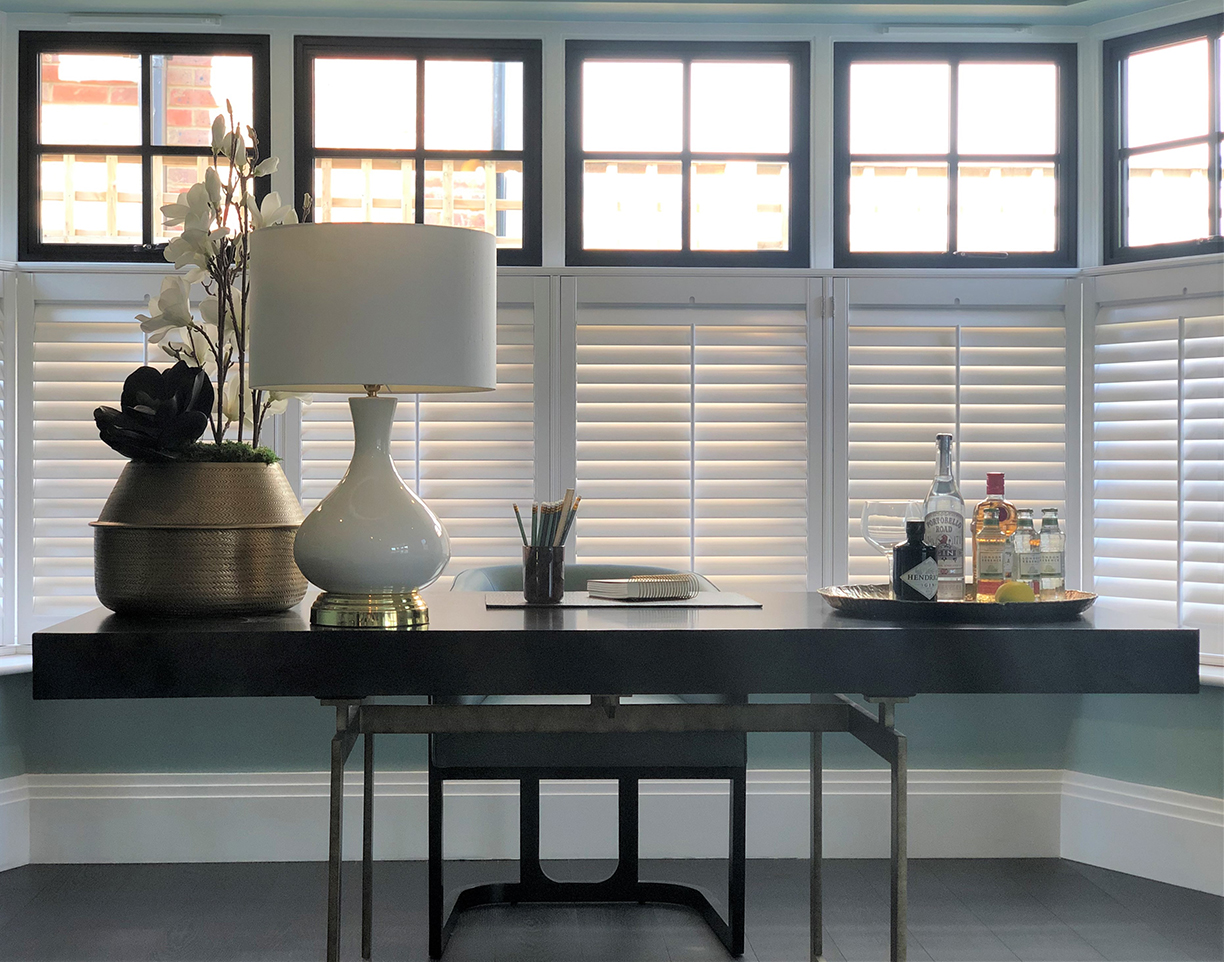
Vegan Home Décor
Home decor and furnishings are one of the more forgotten about areas when it comes to switching to vegan for the first time, with options from many high end boutiques and manufacturers. Although going to a well-known store may be your first option when buying new home goods, there are many small brands/companies who sell from larger retailers, such as Etsy, who have created new and unique products, due to the increasing demand of having vegan/animal-friendly goods.
It’s not only individuals who have started to switch to a more animal-friendly way of living, as large companies have also made the change. Bentley Motors have recently announced that they will be offering vegan leather in their vehicles, a decision inspired by the increase in veganism in LA and Hollywood. Luxury brand Alexander Joseph will also be using a vegan leather to create bespoke lampshades for their new limited-edition cordless lamps.
Photo courtesy Alexander Joseph.
Clutter Free Homes
A minimalist look is increasingly popular, as people are choosing to have a clean-cut home, rather than a heavily decorated one. With minimalism comes the ideals of staying organized and free of clutter, a task that people find either a joy or a challenge. Whichever one you are, there are always ways to make it easier to have a tidy home.
Make the most of the space you have! If you have a small surface area, use the height of the room. Tall storage is a great way to save space in any room. Clothes rails can be pulled down, small ladders can be secretly stored and using a good method of putting the items you use the least in the harder to reach places, are all great ways of optimizing your space.
Having a place for your belongings gives you a tidy home, and therefore a tidy mind. Knowing where your items are gives someone peace of mind when searching for things in their home. It is well known that a tidy environment has a positive impact on the mind, including significantly reducing stress. After all, a clean house is a clean mind.
Photo courtesy Chaplins Furniture.
